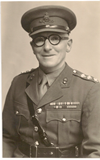Pembrokeshire Gallantry Awards, the Great War 1914-1918
During the course of the Great War, hundreds of men and women from west Wales gained gallantry awards for various deeds of bravery and devotion to duty. Below are the people from the county of Pembrokeshire who I have so far identified as having been recipients of a wide variety of these awards. Due to the large number of people from the county who gained awards, I have added the Victoria Cross winners onto a separate page and kept the details of three winners of the very rare Albert Medal on this page.
George Young Allen, MID, Company Quartermaster Sergeant, 7658, 1st Battalion, Royal Berkshire Regiment. (Tenby). George was mentioned in despatches early in the war. He was killed on 25 April 1917 during the Battle of Arras. (See the Tenby War Memorial).
Ernest Charles Andrews, MSM, MID, CdeG, Regimental Sergeant Major, 14864, 8th Battalion, South Wales Borderers. (Pembroke Dock). Edward’s award of the Meritorious Service Medal was published in the London Gazette of 31 May 1919, in the Birthday Honours list. Ernest was also mentioned in despatches for Mesopotamia, and awarded the French Croix-de-Guerre, listed in the London Gazette of 28 November 1919.
Walter Antwis, MM, Sergeant, 1820, Welsh Regiment. (Pembroke Dock). Walter was born in Pembroke Dock in 1893, and was sent to Canada in 1903 by Barnardos. He returned to Britain in 1913, and enlisted on 13 August 1914 into the Welsh Regiment. He served with the 2nd Battalion, Welsh Regiment on the Western Front, until being transferred to the 9th Welsh on 23 February 1916, gaining the Military Medal for bravery at Third Ypres. His award of the Military Medal was published in the London Gazette of 12 December 1917. Walter was later commissioned into the Welsh Regiment, and relinquished his commission on 17 February 1922. The photograph is courtesy of Robert Best.
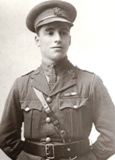
George Edwin Argyle, DCM, CdeG, Company Sergeant Major, 97456, 155th Field Company, Royal Engineers. (Pembroke Dock). George’s award of the Distinguished Conduct Medal was published in the London Gazette of 2 July 1915, and read: ‘From 1st March to 1st Sept., 1918. For consistent good work and devotion to duty. He has often done duty for an officer with considerable success, notably in the preparation of bridges for demolition in the face of the enemy, and has invariably shown cool courage and ability under fire.’ George was also awarded the French Croix-de-Guerre, which was listed in the London Gazette of 12 April 1918.
William Atkinson, DCM, MM, Corporal, 20898, Royal Engineers. (Pembroke). William’s award of the Distinguished Conduct Medal was published in the London Gazette of 9 March 1920, and read: ‘For conspicuous gallantry and devotion to duty. While in charge of his section barricading a street, under heavy shell fire, a shell burst among his party, causing heavy casualties. Though badly shaken, he attended to the wounded, and completed the barricade with the few men he had left. He set a fine example of coolness and determination.’
James Ayres, MM, Private, 54248, Welsh Regiment. (Fishguard). James award of the Military Medal was listed in the London Gazette of 12 December 1917 and was probably for the Pilckem Ridge with the 38th (Welsh) Division. He was discharged due to wounds on 23 September 1918.
Joseph William Banner, DCM, Private, 9954, 2nd Battalion, Worcestershire Regiment. (Milford Haven). Joseph gained his DCM during the retreat from Mons. It was listed in the London Gazette of 29 December 1914, but there is no citation. He had been killed on 16 November 1914 and is buried at Railway Chateau Cemetery. (See the Milford Haven Memorial).
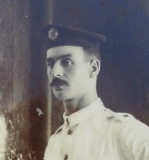
Thomas Henry Banner, MID, Sergeant, 14242, 2nd Field Company, Royal Engineers. (Neyland). Thomas was Mentioned in Sir Douglas Haig’s Despatch of 9 April 1917, which was published on 15 May 1917. He was killed during the Battle of the Aisne on 27 May 1918. (See the Neyland and Llanstadwell Memorials).
Walter Owen Batchelor, MSM, Chief Mechanic, 4038, Royal Air Force (Egypt). (Monkton). Walter’s award was published in the London Gazette of 30 May 1919, in the Birthday Honours list.
David Gwilym Bateman, MM, Private, M2/117245 Private, Army Service Corps, M.T. (Fishguard). David’s award of the Military Medal was published in the London Gazette of 17 July 1917. He died at Carmarthen in 1960.
William Charles Beeton, DCM, Sergeant, 3765, 12th Lancers. (Pembroke). William was awarded the French Medaille Militaire, which was published in the London Gazette of 13 July 1917. He had been awarded the Distinguished Conduct Medal during the Boer War.
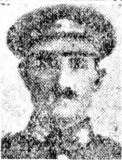
Froude Dillon Bellew, OBE, DSO, MC, Captain (Temp Major), Somerset Light Infantry. (Carew). Froude lived at the family seat at Okehampton Manor, Somerset. His award of the Military Cross was published in the London Gazette of 29 December 1916. His award of the Distinguished Service Order was published in the London Gazete of 8 January 1918, and read: ‘For conspicuous gallantry and devotion to duty while in command of his battalion during several days of intense fighting. He continually visited the front line when movement was very difficult owing to hostile fire, and inspired all ranks by his courage and contempt of danger. Later, he commanded all the troops in the right section of the brigade front, and by his skill and enterprise organised a defence that withstood repeated hostile counter-attacks. He displayed fine leadership and great power of command.’ He was also awarded the Order of the British Empire at some time during the war.
Henry Bennett, DSC, Skipper, 1013SA, Royal Naval Reserve, HM Trawler James Pond. (Milford Haven). Henry was a long serving Milford Skipper, and during the Great War was Skipper of HM Trawler James Pond. He was awarded the Distinguished Service Cross after his ship had been badly damaged in an engagement off the French coast on 14 February 1918. The award was published in the London Gazette of 16 March 1918: ‘Displayed the utmost courage and devotion to duty on this occasion. Skipper Bennett ably assisted Chief Skipper Berry of H.M.A. Trawler James Pond in his efforts to save the vessel after she had been heavily shelled and set on fire. Attempts were made to put out the fire, and to get the ammunition from below, but both efforts failed, and finally the ship was abandoned, the boat being successfully launched in spite of the fact that the falls had been destroyed by the shelling. The crew got away in her and succeeded in effecting a landing on the French Coast where they received every attention from the French authorities.’
William Rhys Berry, MM, Sergeant, 394421, 16th Battalion, London Regiment. (Camrose). William’s award of the Military Medal was gazetted on 21 January 1919. William sent a graphic letter home to his parents to inform them of the action in which he gained his Military Medal, which was in the great advance near Athies.
William Walter Berryman, MID, Deck Hand, 208DA, H.M. Trawler Apley, Royal Naval Reserve. (Milford Haven). William was mentioned in despatches for his good work in Mine Sweeping Operations, in the London Gazette of 29 June 1917. He was killed on 6 December 1917. (See the Milford Haven Memorial).
Edrin Beynon, Sapper, Cable Section, Royal Engineers. (Solva). Edrin was the son of John and Ellen Beynon, of Solva. He had served with the Welsh Regiment, before transferring to the Royal Engineers. Edrin was awarded the French Medaille Militaire in the London Gazette of 28 March 1916. He died in 1967.
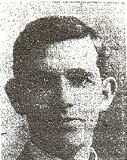
William Beynon, MM, Private, 320256, 24th Battalion, Welsh Regiment. (Whitland). William’s award of the Military Medal was listed in the London Gazette of 19 March 1918. He survived the war.
Jack Bines, MSM, Battery Sergeant Major, 15615, 288th Siege Battery, Royal Garrison Artillery. (Tenby). Jack’s award of the Military Medal was gazetted on 30 May 1919, and was awarded in the King’s Birthday Honours List.
John H. Bishop, MM, Corporal, G/52951, 4th Battalion, Royal Fusiliers. (Haverfordwest). John’s award of the Military Medal was gazetted on 22 February 1918.
James Bodinnar, MSM, Sergeant, 9900, 38th Field Company, Royal Engineers. (Pembroke Dock). James’ award of the Meritorious Service Medal was published in the London Gazette of 17 June 1918.
William Blockwell, CdeG, Lance Bombardier, 371320, Royal Garrison Artillery. (Milford Haven). William was awarded the French Croix-de-Guerre, which was listed in the London Gazette of 12 April 1918. The citation read; ‘From 1st March to 1st Sept., 1918. For consistent good work and devotion to duty. He has often done duty for an officer with considerable success, notably in the preparation of bridges for demolition in the face of the enemy, and has invariably shown cool courage and ability under fire.’
Hamilton Blofeld, MC, Second Lieutenant, Royal Flying Corps. (Fishguard). Hamilton was born in Kent on 29 August 1896. He gained his pilot’s license at the Military School, Ruislip on 17 August 1916 before being posted to 45 Squadron, RFC in France. His award of the Military Cross was published in the London Gazette of 26 July 1917. The citation read: ‘For conspicuous gallantry and skill. Whilst registering a long range gun, he was attacked by five Albatross Scouts, and was severely wounded in several places, the Observer being shot through the wrist. The petrol tank having been pierced, he flew back to his own aerodrome, and was unconscious when taken out. His courage and skill saved both their lives.’ He married Grace Sybil Sweetland on 12 August 1920 and the couple later lived in Fishguard, where they lived a long life. Hamilton died in 1978, while Sybil died in 1986. The couple are buried in St. Mary’s Churchyard, Fishguard.
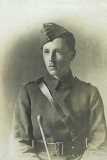
Cecil Oscar Bowles, MM, Sergeant Drummer, 403, Welsh Guards. (Haverfordwest). Cecil’s award of the Military Medal was listed in the London Gazette of 8 December 1916.
William George Brace, MM, Private, 56486, 139th Company, Machine Gun Corps. (New Hedges). William’s award of the Military Medal was noted in the local press when he was given the Freedom of the Borough of Tenby. The date of the Gazette hasn’t yet been traced.
Harry Hickman Bromfield, DSO, Major, Welsh Guards. Harry was the son of Henry and Mary Elizabeth Bromfield, of Stratford-on-Avon. He married Ethel Philippa Philipps in 1906, the eldest daughter of Sir Charles and Lady Philipps of Picton Castle. Harry had served in the South African War as Captain in the South Wales Borderers, and had gained the Distinguished Service Order in South Africa for his gallant leadership. He had been the Chief Constable of Radnorshire Constabulary prior to the war and volunteered to serve with the newly formed Welsh Guards in 1915, joining the battalion at Esher. The 1st Battalion, Welsh Guards was attached to 3rd Guards Brigade, Guards Division, which had been formed in France in August 1915. It remained on the Western Front throughout the war and saw its first major action during the Battle of Loos on 25 September 1915, remaining in the area during the coming months, where they also fought in the subsequent Action of Hohenzollern Redoubt. In July 1916 the Division moved to the Somme, and Harry joined it here, when he took command of Prince of Wales Company from Viscount Clive, who had been promoted. On 14 August the battalion was relieved by the 2nd Battalion Scots Guards, and went into a variety of rest-huts, ruins, and trenches round Colincamps. The Guards then moved back into the line, taking over from 48 Brigade a line along the outskirts of the wood at the end of Ginchy. The situation at the time was a mess. The Welsh Guards were facing the wrong way, as they did not know what had happened during the previous attack, and in the ensuing fighting, Harry was killed while leading his men gallantly on 10 September 1916, aged 47. He is commemorated on the Thiepval Memorial, France.
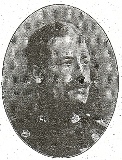
Joseph Brooks, DCM, Sergeant, 8044, 2nd Battalion Royal Munster Fusiliers. (Milford Haven). Joseph’s award was listed in the London Gazette of 23 June 1915, but there is no citation. He was killed in action on 9 May 1915 and is commemorated on the Le Touret Memorial, Richebourg L’Avoue.
Arthur Graham William Browne, MC, Second Lieutenant, King’s Shropshire Light Infantry. (Tenby). Arthur was the son of Arthur William Browne and Rachael Browne, of High Street, Tenby. He lived with his uncle at Pembroke Dock and worked as a Clerk for the Great Western Railways at Pembroke Dock prior to the war. He was commissioned into the King’s Shropshire Light Infantry. His award of the Military Cross was issued while he was attached to a Trench Mortar Battery, and was gazetted on 14 September 1917: ‘For conspicuous gallantry and devotion to duty during a hostile raid. With a Stokes mortar he did splendid work on our left front at a time when two Lewis guns had been blown up, and dispersed several parties of the enemy. Afterwards, when his gun became useless, he assisted in the infantry bombing attack, remaining in the enemy’s lines for three-and-a-half hours and displaying splendid gallantry and keenness throughout the operations.’
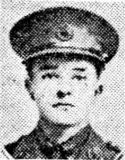
Wilfred Browne, MSM, Sergeant, 9752, Welsh Regiment. (Pembroke Dock). Wilfred’s award of the Meritorious Service Medal was published in the London Gazette of 17 June 1918.
George Oriel Burn, MM, Sergeant, 19855, 15th Battalion, Welsh Regiment. (Tenby). George’s award of the Military Medal was published in the London Gazette of 25 May 1917, and was for a trench raid at Boesinghe on the night of 30 March. George was also awarded the French Medaille Militaire, which was listed in the London Gazette of 16 August 1918. The citation read; ‘The following are among the Decorations and Medals awarded by the Allied Powers at various dates to the British Forces for distinguished services rendered during the course of the campaign.’
Gilbert Burrington, MM, Private, 703727, 102nd Battalion, Canadian Infantry. (Pembroke). Gilbert’s award of the Military Medal was gazetted on 19 January 1917. He was killed on 21 November 1916. (See the Granston War Memorial).
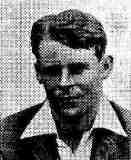
Charles Augustus Button, CdeG, Second Lieutenant, 5th Battery, 45 Brigade, Royal Field Artillery (Neyland). Charles award of the French Croix-de-Guerre was listed in the London Gazette of 19 August 1919. He was killed in action during the Battle of Bois de Buttes at the Battle of the Aisne on 27 May 1918 and is commemorated on the Soissons Memorial. (See the Neyland War Memorial).
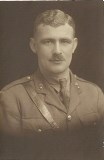
John Holland Button, MM, Lance Corporal, 2236, Liverpool Regiment. (Neyland). John’s award of the Military Medal was listed in the London Gazette of 19 September 1916. He survived the war.
Jeremiah Percy Caisley, DCM, Gunner, 371147, 155th Heavy Battery, Royal Garrison Artillery. (Milford). Percy was a fish packer at Milford for several years prior to the war. His award of the Distinguished Conduct Medal was published in the London Gazette of on 9 March 1920, and read: ‘At Lovadina, during the operations on the Piave, from night 26th-27th October, 1918, to morning of 28th October, he was one of the forward observation party, and during the night 26th-27th had to repair breaks in the line several times. On the morning 27th he established a visual station in the front line, and for five hours was heavily shelled.’ He died in 1970.
Peter Callan, MM, Lance Corporal, 16259, 7th Battalion, Somerset Light Infantry. (Manorbier). Peter’s award of the Military Medal was published in the London Gazette of 16 October 1917.
The Honorable Eric Octavius Campbell, DSO and Bar, Lieutenant-Colonel, Seaforth Highlanders. (Stackpole Elidor). Eric’s first award was awarded in the London Gazette of 23 March 1915. He gained a Bar to his Distinguished Service Order in 1918, and was also mentioned in despatches twice. Sadly Eric had been invalided home, and died on 4 June 1918. He is buried at Stackpole Elidor Churchyard, in the Cawdor plot. (See the Stackpole War Memorial).
Walter Henry Carne, DSM, Stoker Petty Officer, 302549, Royal Navy, HMS Marlborough. (Tenby). Walter was awarded the Distinguished Service Medal for gallantry during the Battle of Jutland on 31 May 1916. His award was listed in the London Gazette of 15 September 1916. Walter remained in the Royal Navy until 12 January 1925, when he was pensioned off.
Edward Carter, MM, Corporal, 371108, 68th Siege Battery, Royal Garrison Artillery. (Milford Haven). Edward’s award of the Military Medal was published in the London Gazette of 19 August 1919.
Thomas Wade Charles, MM, Corporal, 27179, 7th Battalion, King’s Shropshire Light Infantry. (Roch). Thomas’ award of the MM was published in the London Gazette of 12 July 1918.
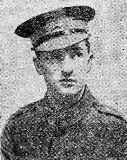
John Charles Chudley, DSM and Bar, Chief Steward, L/1943, Royal Navy, HMS Prize. (Milford Haven). John’s first award of the DSM was listed in the London Gazette of 22 June 1917. His second award was listed in the London Gazette of 14 September 1917. John was killed on 14 August 1917. (See the Milford Haven Memorial).
Leonard Victor Cole, DCM, Corporal, 50458, 37th Division Signal Company, Royal Engineers. (Fishguard). Leonard’s award of the Distinguished Conduct Medal was published in the London Gazette of 12 November 1918, and read: ‘For conspicuous gallantry and devotion to duty. He was in charge of the brigade forward report centre for four days and nights with no cover under heavy shelling, and maintained telephonic communication throughout. He rendered very valuable service.’
Frederick O’Donald Collins, DCM, MID, Colour Sergeant, 7745, 2nd Battalion, Welsh Regiment. (Pembroke Dock). Frederick was awarded the Distinguished Conduct Medal for Loos. The citation was published in the London Gazette of 11 March 1916, and read: ‘For conspicuous good work throughout the campaign. He has done good service as acting regimental serjeant-major during seven months, and has taken part in every action in which the battalion was engaged.’ He was also mentioned in despatches during the war, for gallantry at Langemarck.
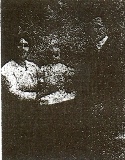
Miss Elizabeth Cooper, OBE. (Milford Haven). Elizabeth was a very hard working local fund raiser, involved in several charities in the town. She was awarded the Order of the British Empire in the New Year’s Honours List of January 1918 for her work as Honorary Secretary and Treasurer of the Milford Haven and South Wales Minesweepers’ Comforts Supply Association.
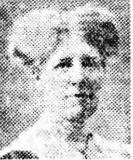
Fred Charles Copeland, MM, Sergeant, 371149, 164th Siege Battery, Royal Garrison Artillery. (Fishguard). Fred’s award of the Military Medal was published in the London Gazette of 19 August 1919.
Stanley Copleston, MSM, Sergeant, S4/093680, 32nd Divisional Train, Royal Engineers. (Goodwick). Stanley’s award of the Meritorious Service Medal was gazetted on 17 January 1919, and was awarded in the New Year’s Honours List.
John Leslie Cornish, MM, Gunner, 371035, Anti Aircraft Company, Royal Garrison Artillery. (Milford Haven). John’s award of the Military Medal was published in the London Gazette of 18 October 1918. He worked at the Fish Market, and died in 1969.
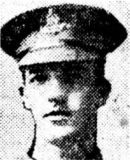
Thomas Cox, MM, Private, 202711, King’s Liverpool Regiment. (Tenby). Thomas’ award of the Military Medal was published in the London Gazette of 16 October 1917.
Hubert White Cozens, MM, Rifleman, 554870, 16th Battalion, London Regiment. (Cosheston). Hubert was born at Pembroke Dock on 9 January 1898, the son of Thomas Charles Cozens and Eveline Cozens (nee White). The family later resided at The Post Office, Cosheston. Hubert left home to work as a bank assistant and enlisted in London into the London Regiment. He was serving with the 16th Battalion, London Regiment (The Rifles) when he gained the award of the Military Medal for Bravery in the Field. His award was published in the London Gazette of 12 March 1918. His brother, Samuel Bradfield Cozens, was killed in France on 28 August 1918. After the war Hubert returned to banking, working in South Wales firstly, where he married Enid Rees on 19 April 1922. He then took up a post as a bank manager at Harrow. Hubert died at Chichester in 1993.
Francis Newton Allen Cromie, CB, DSO, Captain, Royal Navy, Naval Attache, Petrograd. (Haverfordwest). Francis was the holder of the DSO, which was awarded; ‘In recognition of his services in command of British submarines operating in the Baltic Sea’. He was also awarded the Chevalier, Legion of Honour; Order of St. Vladimir with Swords (Russia) and the Cross of St. George (Russia). He died in Archangel on 31 August 1918. He was further honoured after his death; ‘The KING has been graciously pleased to approve of the posthumous honour of a Companionship of the Most Honourable Order of the Bath (Military Division) being conferred on the late Commander (acting Captain) Francis Newton Allen Cromie, DSO, R.N., in recognition of his distinguished services in the Allied Cause in Russia, and of the devotion to duty which he displayed in remaining at his post as British Naval Attaché in Russia when the British Embassy was withdrawn. This devotion to duty cost him his life.’ (See the Haverfordwest War Memorial).
William Gilbert Crutchley, DCM, Sapper, 47871, 14th Division Signal Company, Royal Engineers. (Haverfordwest and Fishguard). William’s award of the Distinguished Conduct Medal was published in the London Gazette of 10 March 1916, and read: ‘For consistent good work in laying and repairing telephone wires under constant fire. He was slightly wounded, but after having his wound dressed resumed his work in the most advanced lines.’
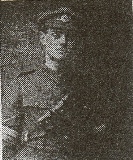
William John Davey, DSM, Petty Officer, 193429, Royal Navy, HMS Lucia. (Pembroke Dock). William’s award was listed in the London Gazette of 8 August 1919. He died on 3 July 1920. (See the Pembroke Dock War Memorial).
Edward Vaughan Davies, DSO, Lieutenant, Royal Navy, HMS Speedwell. (Llanrhian). Edward’s award of the Distinguished Service Order was published in the London Gazette of 23 March 1917, and read; ‘The KING has been graciously pleased to give orders for the appointment of the under-mentioned Officers to be Companions of the Distinguished Service Order.’
George Beynon Davies, MID, CdeG, Corporal, 13969, 9th Battalion, Welsh Regiment. (St. Davids). George’s award of the French Croix-de-Guerre was listed in the London Gazette of 8 October 1918, and was for bringing in wounded while under heavy enemy fire on 25 September 1915. He was also mentioned in despatches.
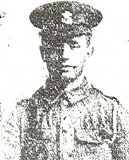
George Mathias Davies, MM, Gunner, 371366, Royal Garrison Artillery. George was the brother of Henry Davies, of Spring Gardens, St. Nicholas, Fishguard. He served in 114 Siege Battery, Royal Garrison Artillery, which had formed at Pembroke Dock in 1916. His Military Medal was reportedly awarded for Vimy Ridge, and was published in the London Gazette of 29 September 1917. His brother died of wounds in France on 4 November 1918, and is commemorated on the Granston and St. Nicholas War Memorial.
James David Davies, MSM, Sergeant, 14661, Welsh Regiment. (Cosheston). His award was for valuable services, and was listed in the London Gazette of 14 December 1917.
John Wharton Lloyd Davies, Lieutenant, Royal Engineers. (Haverfordwest). John’s award of the Military Cross was published in the London Gazette of 20 October 1916, and read: ‘For conspicuous gallantry and determination when in charge of working and wiring parties in advance of the front line. Under heavy shell-fire he successfully carried out his work. He set an example of great energy and devotion to all under him.’
Thomas George Davies, MM, Corporal, 116887, 152nd Company, Machine Gun Corps. (Tenby). Thomas’ award of the Military Medal was published in the London Gazette of 7 October 1918.
Thomas Henry Davies, MM, Private, 315648, 1/4th Battalion, Royal Welsh Fusiliers. (Rudbaxton). Thomas’s award of the Military Medal was published in the London Gazette of 2 August 1918.
William John Davies, DSM, Shipwright, 344865, Royal Navy, HMS Lancaster. (Pembroke Dock). William’s award was listed in the London Gazette of 17 September 1918. He died on 26 February 1919 and is buried at Pembroke Dock (Llanion) Cemetery. (See the Pembroke Dock War Memorial).
William Karl Davies, DSM, Petty Officer, Royal Navy. (Tenby). William was reportedly awarded the Distinguished Service Medal during the war.
Frederick George Dawkins, Private, 56101, 21st Battalion, Northumberland Fusiliers. (Pembroke). Frederick was awarded the Order of the Crown of Italy 3rd Class in the London Gazette of 30 November 1920.
George Donaldson, DCM, Sergeant, 18085, Yorkshire Light Infantry. (Milford). George’s award of the Distinguished Conduct Medal was published in the London Gazette of 16 April 1918, and read: ‘For conspicuous gallantry and devotion to duty when in charge of a platoon. He handled it with great skill and courage in various operations. His fine example had the greatest effect on all ranks.’ He was also mentioned in despatches on 25 May 1917.
Herbert Walter Dunk, MM, Rifleman, 2516, London Regiment. (Steynton). Herbert was the brother of Mrs Price, of Steynton Vicarage. His award of the Military Medal was published in the London Gazette of 8 December 1916.
George Samuel Dunn, DSM, Chief Engineman, 92ES, Royal Naval Reserve, HM Drifter Silvery Harvest. (Milford Haven). George’s award was listed in the London Gazette of 5 April 1918. He was drowned through a collision off Berry Head on 16 May 1918. (See the Milford Haven War Memorial).
John Charles Dunn, DSM, Sergeant, PO/7770, Royal Marine Light Infantry, Portsmouth Division. (Burton). John’s award of the Distinguished Service Medal was published in the London Gazette of 6 September 1916, and was for Gallipoli.
Arthur Edwards, MM, Bombardier, 64876, 112 Battery, Royal Field Artillery. (Little Haven). Arthur’s award of the Military Medal was listed in the London Gazette of 2 August 1918. He had been killed during the German Offensive on 25 March 1918 and is commemorated on the Arras Memorial. (See the Dale War Memorial).
David Edwards, MM, Gunner, 30054, Royal Field Artillery. (Pembroke). David resided at 47, Milton Terrace, Pembroke. He worked at Pembroke Dockyard prior to the war. The award of the Military Medal was probably for the Somme.
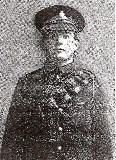
Frederick Edwards, MM, Sergeant, 31391, 19th Battalion, Welsh Regiment. (Johnston). Frederick’s award of the Military Medal was listed in the London Gazette of 20 August 1919. He was discharged Class Z on 1 April 1919.
James Albert Edwards, MSM, Staff Sergeant, T3/029878, 23rd Divisional train, Army Service Corps. (Pembroke Dock). James’ award of the Meritorious Service Medal was published in the London Gazette of 31 December 1918.
David Ithel Ellis, MC, Major, 285 Brigade, Royal Field Artillery. (Milford). David’s award of the MC was published in the London Gazette of 14 September 1917, and read; ‘For conspicuous gallantry and devotion to duty when under an intense and accurate hostile bombardment of his battery. He worked incessantly throughout the night in order to keep his guns in action, by his splendid personal example and devotion keeping up the spirits of his men under circumstances of an exceptionally trying nature. On several occasions he has been the life and soul of his battery under the heaviest shellfire, restoring confidence and cheerfulness at a time when they were most difficult to maintain.’ He was killed later in the war. (See the Pembroke R.G.A. Memorial, Milford Haven).
William J. Elsey, MSM, Staff Sergeant, 17450, Royal Army Medical Corps. (Pembroke Dock). William’s award of the Meritorious Service Medal was published in the London Gazette of 17 June 1918.
Arthur Lambert Evans, CdeG, Sergeant, 76177, No. 1 Tank Field Company, Tank Corps (Llanstadwell). Arthur’s award of the French Croix-de-Guerre was published in the London Gazette of 11 July 1919.
Sergeant Evans, MC, Sergeant. (Pembroke). This man was reported as having been awarded the Military Cross, but he cannot presently be identified.
G. Evans, MM, Lieutenant, Royal Engineers. (Pembroke Dock). This man was reported as having been awarded the Military Medal, but he cannot presently be identified.
John Fisher, MM, Sapper, 37354, 15th Field Company, Royal Engineers. (Manorbier). John’s award of the Military Medal was published in the London Gazette of 30 May 1919.
Victor Mathias Folland, MSM, Staff Sergeant, 15086, Royal Engineers. (Pembroke Dock). Victor was awarded his Meritorious Service Medal for services at home, although he did serve in France from January 1915 onwards. The award was published in the London Gazette of 30 May 1919. Victor died in Cairo on 27 July 1928, and his medal went missing. A replacement was re-issued to his father in 1929.
William Flood, MM, Sergeant, 58589, ‘D’ Battery, 14 Brigade, Royal Field Artillery. (Pembroke Dock). William’s award of the Military Medal was listed in the London Gazette of 10 November 1916. He had been killed on the Somme on 7 September 1916, and is buried at Quarry Cemetery, Montauban. (See the Pembroke Dock War Memorial).
Alfred Fortune, DCM, Sergeant, 54184, 13th Battalion, Welsh Regiment. (Haverfordwest). Alfred’s award of the Distinguished Conduct Medal was published in the London Gazette of 11 March 1920, and read: ‘For continuous gallantry in action from 18th September to 7th November 1918. Owing to shortage of officers he acted as platoon commander throughout these operations. The courage and leadership which he displayed at all times enabled his platoon to accomplish every task they were called upon to perform.’
George Fowler, MM, Bombardier, 73984, ‘D’ Battery, 235 Brigade, Royal Field Artillery. (Haverfordwest). George’s award of the Military Medal was listed in the London Gazette of 25 September 1917. He was killed in action during the German Offensive on the Somme on 27 March 1918, and is commemorated on the Arras Memorial. (See the Haverfordwest War Memorial).
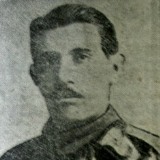
James Harold Freeman, MM, Sergeant, S/18747, 361st Company, Royal Army Service Corps. (Pembroke). James arrived in France with the British Expeditionary Force on 10 August 1914. He served for the duration of the war. His award of the Military Medal was listed in the London Gazette of 30 May 1919. James was also awarded the Medaille d’Honneur avec glaives en Bronze, which was published in the London Gazette of 18 July 1919.
John Richard Dudley Freeman, DSC, Royal Navy, HMS Mary Rose. (Cilwendeg). John’s award of the Distinguished Service Cross was published in the London Gazette of 6 August 1918: ‘Act. Lieut. John Richard Dudley Freeman, R.N. Gallantly performed his duty in charge of a 4-inch gun in H.M.S. ‘Mary Rose’ while in action against superior forces. The KING has been graciously pleased to approve of the award of the following honour, decoration and medals to the undermentioned Officers and Men in recognition of their gallantry in the action between H.M. Torpedo Boat Destroyers ‘Mary Rose’ and ‘Strongbow’ and three German light cruisers which attacked a convoy on the 17th October 1917.’
Sidney Oliver Garrett, MSM, Staff Sergeant, 48010, 129th Field Ambulance, Royal Army Medical Corps. (Haverfordwest). Sidney’s award of the Meritorious Service Medal was gazetted on 17 January 1919.
James Alexander Goodman, MC, Lieutenant, 4th Battalion, Welsh Regiment. (Lamphey). James’ award of the Military Cross was published in the London Gazette of 16 August 1917, and read; ‘For conspicuous gallantry and devotion to duty. He handled his platoon with great, courage and contempt of danger under very heavy fire at close range, displaying fine leadership and setting a splendid example.’
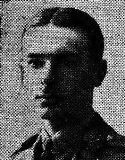
James Sinclair Graham, MID, Corporal, 14584, 57th Field Company, Royal Engineers. (Pembroke Dock). James’s Mention was published in the London Gazette of 16 February 1915. He was killed on 13 October 1917. (See the Pembroke Dock War Memorial).
Patrick John Griffin, MM, Lance Corporal, 20709, 15th Field Company, Royal Engineers. (Pembroke Dock). Patrick’s award of the Military Medal was listed in the London Gazette of 10 November 1916. He was killed at Ypres the following year, on 7 July 1917 and is buried at Brandhoek Military Cemetery. (See the Pembroke Dock War Memorial).
Titus James Griffiths, Seaman, C1588, Royal Naval Reserve, HMS Endymion. (Cilgerran). Titus was awarded a medal during his time of war, but what medal it was is unclear. (It was possibly a foreign award, such as the Tsar’s Medal).
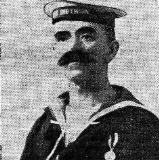
William Griffiths, MSM, Regimental Quartermaster Sergeant, 113323, 3rd Reserve Battalion, Royal Engineers. (Pembroke Dock). William was awarded the Meritorious Service Medal in the London Gazette of 30 May 1919. William was awarded the French Medaille d’H’onneur Avec Glaives en Argent. The award was published in the London Gazette of 16 March 1920.
William Griffiths, MM, Sergeant, 21707, 10th Battalion, South Wales Borderers. (Stepaside). William’s award of the Military Medal was published in the London Gazette of 13 May 1919.
Griffith David Gwynne, MM, Sergeant, 53607, 2nd Battalion, Welsh Regiment. (St. Dogmaels). Griffith’s award of the Military Medal was listed in the London Gazette of 13 March 1919.
Alfred Gwyther, MM, Corporal, 267409, 2/7th Battalion, Royal Warwickshire Regiment. (Pembroke Dock). Alfred’s award of the Military Medal was gazetted on 25 May 1917. A newspaper article stated; ‘At Fresnoy-le-Petit, although wounded early in the attack, he remained with his platoon leading his men under heavy fire and setting a fine example of bravery and determined conduct.’
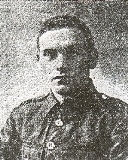
James Hall, MM, Sapper, 139622, 354th Electrical and Mechanical Company, Royal Engineers. (Pembroke). James’ award of the Military Medal was published in the London gazette of 30 May 1919.
Henry William Hamshaw, MM, Sergeant, 9764, 2nd Battalion, Worcestershire Regiment. (Pembroke). Henry’s award of the Military Medal was listed in the London Gazette of 2 June 1916. He was killed on the Somme on 22 October 1916 and is commemorated on the Thiepval Memorial.
John Hancock, DCM, Company Sergeant Major, 320016, 24th Battalion, Welsh Regiment. (Camrose) John’s award of the Distinguished Conduct Medal was published in the London Gazette of 11 March 1920, which read: ‘For conspicuous devotion to duty, ability and leadership as platoon commander. He has on various occasions led his platoon, setting an excellent example to all ranks.’
George Malcolm Nixon Harman, DSO, Major, 2nd Battalion, Rifle Brigade. (Fishguard). George’s award of the Distinguished Service Order was for East Africa. The London Gazette of 19 September 1902 read; ‘The KING has been graciously pleased to give orders for the following appointments to the Distinguished Service Order, and promotions in the Army, in recognition of the services of the undermentioned Officers during operations in East and West Africa, respectively (For services during operations in the Lango District of Uganda).’ George served again during the Great War, and was killed in Flanders on 28 November 1914. (See the Fishguard War Memorial).
Arthur Harries, DSM, Petty Officer, 228289, Royal Navy, HMS Defiance. (Penally). Arthur was awarded the Distinguished Service Medal for Gallipoli, but the date of the Gazette cannot presently be traced.
Reverend Gerald Hollidge Harries, MC, Chaplain, Army Chaplain’s Department. (Tenby). Gerald’s award of the Military Cross was published in the London Gazette of 19 April 1918, and read; ‘For conspicuous gallantry and devotion to duty in going fearlessly during four days to all parts of the battlefield cheering the wounded and comforting the dying. No post was too dangerous and no shelling too heavy for him.’
John Harries, MM and Bar, Sergeant, 275952, Royal Garrison Artillery. (Penally). John was awarded his first Military Medal in the London gazette of 27 October 1916. His second award of the Military Medal was published in the London Gazette of 11 June 1918.
William A. Harries, MM and Bar, Lance Corporal, 1972, Welsh Guards. (Haverfordwest). William was awarded the MM and Bar. His first award of the Military Medal was listed in the London Gazette of 13 June 1919. The award of a Bar to his MM was listed in the same Gazette issue.
John Plunkett Verney Hawksley, DSO, MID, Lieutenant-Colonel, 110 Brigade, Royal Field Artillery. (Caldy Island, Tenby). John had served in the South African and Sudan campaigns, and was the holder of the DSO, which was listed in the London Gazette of 11 January 1916. He was also awarded the Order of the Osmanieh (4th Class). John was killed on the Somme on 8 August 1916. (See the Tenby War Memorial).
Randal Plunkett Taylor Hawksley, DSO, Major (T/Brig-Gen), Royal Engineers. (Tenby). Randal was awarded the Distinguished Service Order in the London Gazette of 1 January 1918.
Henry May Henderson, MID, Lieutenant-Colonel, 18th Division, Royal Engineers. (Tenby). Henry was mentioned in despatches at some time before being killed on 10 March 1917. (See the Tenby War Memorial).
Henry Thomas Henshall, DSM, Ordinary Telegraphist, J/48097, Royal Naval Reserve, HMS Prize. (Milford Haven). Henry’s award was listed in the London Gazette of 14 September 1917. He was killed when Prize was sunk on 14 August 1917 and is commemorated on the Chatham Naval Memorial. (See the Milford Haven War Memorial).
Sidney Charles Hier, CdeG, Gunner, 371100, 108th Heavy Battery, Royal Garrison Artillery. (Goodwick). Sidney’s award of the French Croix-de-Guerre was published in the London Gazette of 12 April 1918. He died in 1976 and is buried in Fishguard Church Cemetery.
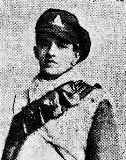
Archibald Bellars Higgon, MID, Captain, 15th Brigade, Royal Field Artillery. (Treffgarne). Archibald’s Mention was Gazetted on 16 October 1914. He was later killed while serving as a Major with ‘D’ Battery, 69th Howitzer Brigade. (See the Spittal War Memorial).
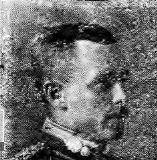
Frederick George Hill, DSO, Surgeon, Royal Navy. (Pembroke Dock). A local newspaper published a photograph of Frederick, which stated that he had been awarded the Distinguished Service Order for his services in Mesopotamia. No trace of the award has yet been found, as the London Gazette can sometimes be difficult to wade through.
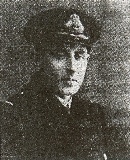
David James Hinds, DCM, Sergeant, 320049, 24th Battalion, Welsh Regiment. (Tenby) David’s award of the Distinguished Conduct Medal was published in the London Gazette of 1 May 1918, which read: ‘For conspicuous gallantry and devotion to duty when in charge of the battalion advance report station during an attack. In the final stages of the attack he occupied a most exposed position under shell and machine-gun fire, and continued to send back messages until the enemy’s position was captured. He showed splendid courage and resource.’
Stuart Holder, Lieutenant-Commander, Royal Navy. (Tenby). Stuart was awarded the Russian Order of St. Anne for his services during the Battle of Jutland on 31 May 1916. The award was published in the London Gazette of 22 June 1917. He was the son of Captain C F Holder, Royal Dragoons, and Mrs Holder, of Tenby.
George Everard Hope, MC, Lieutenant-Colonel, 1/8th Battalion, Lancashire Fusiliers. (Solva). George had served in the Grenadier Guards before being given command of 1/8th Lancashire Fusiliers. His award of the Military Cross was published in the London Gazette of 18 February 1915. He was also Mentioned in Despatches three times: on 17 February 1915; 15 June 1916; and 15 May 1917. He was killed on 10 October 1917 and buried at Ramscappelle Road Military Cemetery. (See the Solva War Memorial).
Henry Wareham Hopkins, DCM, Sergeant Major, 18364, Army Service Corps. (Pembroke Dock). Henry was reportedly awarded the Distinguished Conduct Medal, but it has not yet been traced.
Edmund Horan, MM, Sapper, T908/448489, Royal Engineers. (Goodwick). Edmund was born in Cork in 1870. He married Elizabeth Ann Rees in 1898 and the couple resided at Llanrhian. He served with the Welsh Field Company, Royal Engineers during the war and was awarded the Military Medal. The award was gazetted on 19 March 1918. He died on 4 July 1940 and is buried in Fishguard Church Cemetery. Edmund and Elizabeth lost two sons during the war, one of whom, John Rees Horan, or ‘Jack’ died while serving with the Royal Navy. Jack’s photo is inset in his father Edmund’s, below.
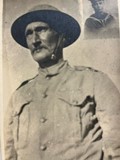
William John Howell, MM, MID, Corporal, 461102, 26th Field Ambulance, Royal Army Medical Corps. (Pembroke Dock). William’s award of the Military Medal was gazetted on 10 November 1916. William was also mentioned in despatches on 1 January 1916. He was killed later in the war. (See the Pembroke Dock War Memorial).
Cornelius Brynmor Hughes, MM, Sergeant, 20014, South Wales Borderers. (Maenclochog). Cornelius’ award of the Military Medal was published in the London Gazette of 29 August 1918.
George Leonard Hughes, MC, Lieutenant, Royal Garrison Artillery. (Fishguard). George was born in Sunderland on 16 August 1895, the son of the Reverend George Henry Hughes and Edith Mary Hughes. By 1911 his family had returned to their native Pembrokeshire and were living at Hubberston Rectory. George was commissioned into the Royal Garrison Artillery on 9 January 1915 and was posted to the 26th Siege Battery. His award of the Military Cross was published in the King’s Birthday Honours List of 3 June 1919 and was: ‘For distinguished service in connection with military operations in France and Flanders.’ He continued to serve with the Indian Mountain Artillery in the North West Frontier after the war and was still serving by the outbreak of World War Two, spending over two years as a Japanese prisoner of war in Changi Jail. After recovering from his ordeals, he commanded the 22nd Mountain Artillery Regiment, Royal Artillery during the Korean War. He became a Church Warden at St. Mary’s, Fishguard and High Sheriff of Pembrokeshire, among other voluntary roles, after retiring from the army and died at Fishguard in 1973. He is buried with his wife in St. Mary’s Church Cemetery.
George Hunter, MSM, MID, Regimental Quartermaster Sergeant, 6843, 2nd Battalion, Welsh Regiment. (Pembroke Dock). George’s award of the Meritorious Service Medal was listed in the Peace Gazette of 30 May 1919. George was also mentioned in despatches on 8 December 1914, and was for the Retreat from Mons.
Frederick William Ingram, DSM, Second Engineman, ON/402?ES, Royal Naval Reserve. (Milford Haven). Frederick’s award of the Distinguished Service Medal was for minesweeping operations in the Dardanelles, when he was one of only four survivors after his trawler was blown up by a mine. The award was published in the London Gazette of 29 June 1915: ‘For service in H.M. Minesweeper 285 on the 8th March, 1915.’
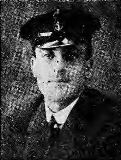
Arthur Irving, MID, Driver, 5526, C/88 Brigade, Royal Field Artillery. (Narberth). Arthur was mentioned in despatches twice, on 18 May 1917, and on 11 December 1917.
David James, MM, Lance Corporal, 613, Welsh Guards. (Llanfyrnach). David was probably awarded the Military Medal for Loos, listed in the London Gazette of 8 August 1916. He was killed on the Somme on 16 September 1916 and is commemorated on the Thiepval Memorial. (See the Crymych War Memorial).
Essex James, MM, Private, 14330, 1st Battalion, Welsh Regiment. (Milford). Essex’s award of the Military Medal was published in the London Gazette of 27 February 1919.
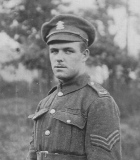
Evan George James, DCM, Lance Corporal, 10190, 1st Battalion, Royal Welsh Fusiliers. (Haverfordwest). Evan served with the Royal Navy for several years prior to the war. He then enlisted into the 1st Royal Welsh Fusiliers. His award of the Distinguished Conduct Medal was published in the London Gazette of 30 June 1915, and read: ‘For conspicuous gallantry on 12th March 1915, at Neuve Chapelle, when he, on four occasions, took messages under heavy fire.’ Evan was also awarded the Russian Medal of St. George, 3rd Class in the London Gazette of 25 August 1915.
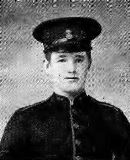
Henry James, MM, Corporal, Royal Field Artillery. (Tenby). Henry’s award of the Military Medal was published in the London Gazette of 13 September 1918.
Henry Cecil James, MM, Rifleman, R/19400, 21st Battalion, King’s Royal Rifle Corps. (Milford Haven). Henry’s award of the Military Medal was published in the London Gazette of 8 December 1916. He later transferred to the Royal Engineers, and survived the war.
John Lloyd James, MM, Lance Corporal, 1543, 2nd Division Signal Company, Australian Engineers. (St. Dogmaels). John was originally recommended for the Distinguished Conduct Medal. The recommendation read; ‘This N.C.O. was working a relay post during the operations at Zonnebeke on 4/5th October 1917. The officer in charge was wounded immediately after zero hour, when Lance Corporal James at once took charge of the party and continued with the work with great skill and bravery. He worked untiringly and ceaselessly in order to maintain an effective system of communication between the Brigade Forward Station and Advanced Brigade H.Q. both by telephone and visual. His action and coolness in this heavily shelled area set a fine example to the men under his command.’ The award of the Military Medal was turned down, and instead James was awarded the Military Medal, which was published in the London Gazette of 14 January 1918.
Thomas Evan James, DCM, Private, 27478, 2nd Battalion, Welsh Regiment. (Fishguard). Evan’s award of the Distinguished Conduct Medal was published in the London Gazette of 15 March 1916, and read: ‘For conspicuous gallantry in volunteering to cut through the enemy’s wire within a few yards of his parapet, and carrying out his objective in spite of his patrol being seen and fired on.’ Thomas was killed on 15 July 1916 and is commemorated on the Thiepval Memorial. (See the Fishguard War Memorial).
William J. James, MM, Second Corporal, 27123, ‘P’ Cable Section, Royal Engineers. (Burton). William’s award of the Military Medal was published in the London Gazette of 25 September 1917.
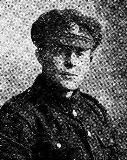
George James Jarrett, DSM and Bar, Petty Officer, 222863, Royal Navy, HMS Prize. (Milford Haven). George’s first award was listed in the London Gazette of 22 June 1917. His Bar was listed in the Gazette of 14 September 1917. George was killed alongside Henry Henshall on 14 August 1917, and is commemorated on the Plymouth Naval Memorial. (See the Milford Haven War Memorial).
Albert Thomas Jenkins, MM, Private, 434911, 50th Battalion (Alberta), Canadian Infantry. (Pembroke Dock). Albert’s award of the Military Medal was for the Somme, and was gazetted on 5 January 1917. He was killed later in the war. (See the Pembroke Dock War Memorial).
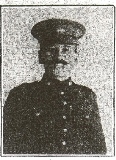
Benjamin David Jenkins, MM, Private, 31227, 1st Battalion, Royal Welsh Fusiliers. (Boncath). Benjamin’s award of the Military Medal was listed in the London Gazette of 8 December 1916. He was killed on the Ancre on 27 February 1917 and is commemorated on the Thiepval Memorial. (See the St. Dogmaels War Memorial).
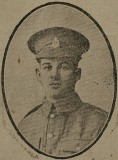
Charles Gwynne Jenkins, DCM, Sapper, 48409, 93rd Field Company, Royal Engineers. (St. Ishmaels). Charles’s award of the Distinguished Conduct Medal was published in the London Gazette of 9 January 1920, which read: ‘For conspicuous gallantry and: devotion to duty on 11th-12th October, 1918, at Neuvilly, when in charge of a small party of sappers carrying an improvised foot bridge. He jumped into the water, and, with the help of a sapper, held the bridge in position till the attacking troops crossed. This took place under a shower of hand grenades from a camouflaged enemy trench close by.’
John Benjamin Jenkins, MM, Private, 202695, 15th Battalion, Welsh Regiment. (Treffgarne). John’s award of the Military Medal was published in the London Gazette of 11 February 1919, and was for bravery during the 100 days offensive.
Leoline Jenkins, DSO, MC and Bar, Lieutenant-Colonel, Royal Air Force, South Eastern H.Q. (Tenby). Leoline was the holder of the DSO and the MC (LG 3 June 1916) and Bar. The citation for his second MC, in the London Gazette of 22 September 1916, read; ‘For conspicuous gallantry and skill. He has done much fine work for the artillery, often under very difficult circumstances. On one occasion he flew for a long time at a very low altitude under continual machine-gun fire.’
Richard Fleetwood Jenkins, MC, Lieutenant, 1/4th Battalion, Cheshire Regiment. (Uzmaston). Richard’s award of the Military Cross was published in the London Gazette of 3 October 1919, and read: ‘On 16th October, 1918, he led a patrol party of eight men, who crossed the Lys Canal on a temporary raft, which only two men at a time could occupy, under heavy machine-gun and rifle fire. He maintained himself in face of machine-gun and minenwerfer fire, on the enemy’s bank until reinforced by a company of another regiment. He showed marked gallantry and dash.’
Robert Edward Job, MM, Sergeant, 371048, Royal Garrison Artillery. (Milford Haven). Robert’s award of the Military Medal was published in the London Gazette of 19 August 1918.
Benjamin John, MM, Corporal, 291106, Royal Garrison Artillery. (Haverfordwest). Benjamin’s award of the Military Medal was published in the London Gazette of 2 August 1918. He had originally enlisted into the Pembroke Royal Garrison Artillery.
Benjamin Davies John, MID, Private, 2153, 11th Battalion, Australian Imperial Force. (Templeton). Benjamin’s Mention was Gazetted on 28 January 1916, and was for Gallipoli. He was killed later in the war. (See the Templeton War Memorial).
Crofton Henry John, MM, Able Seaman, WZ/1127, Hood Battalion, Royal Naval Division. (Tenby). His award of the Military Medal was listed in the London Gazette of 13 May 1919.
Thomas John, MM, Private, 22217, 13th Battalion, Welsh Regiment. (Letterston). Thomas’ award of the Military Medal was published in the London Gazette of 28 September 1917, and was for the Pilckem Ridge. He was later killed in action on 8 October 1918 during the 100 days offensive. (See the Letterston War Memorial).
Thomas James John, MSM, Regimental Sergeant Major, 7481, Royal Engineers. (Haverfordwest). Thomas’s award of the Meritorious Service Medal was published in the London Gazette of 15 June 1917.
Henry Johns, DSC, Master, Mercantile Marine, SS Haslingden. (Solva). Henry was awarded his Distinguished Service Cross for War Services, in the London Gazette of 16 November 1917. He died on 12 May 1918.
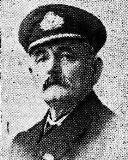
Herbert David Johns, MC, Lieutenant, Royal Garrison Artillery. (Fishguard). Herbert’s award of the Military Cross was published in the London Gazette of 24 July 1917, which read: ‘For conspicuous gallantry and devotion to duty. At great personal risk he established himself in a trench close to the enemy’s front line, from which he successfully directed the fire of several batteries for cutting enemy wire. The trench was much damaged, and the telephone wires were repeatedly cut.’ He was also Mentioned in Despatches on 23 December 1918.
Owen Llewellyn Johns, MC, Lieutenant, ‘Y’ 133rd Trench Mortar Battery, Royal Field Artillery. (Manorowen). Owen’s award of the Military Cross was published in the London Gazette of 23 June 1916, and read; ‘For conspicuous gallantry and devotion to duty. During a very heavy bombardment by the enemy, after firing all his ammunition, he formed up his men and placed himself at the disposal of the Infantry Commanding Officer. He proceeded under heavy fire to the firing line, into which the enemy had penetrated, to see how he could best assist. He set a fine example of cool bravery.’ He was killed on 28 June 1916. (See the Fishguard War Memorial).
William Hugo Johnson, MSM, Second Hand, 729, Royal Naval Reserve, HMS Idaho. (Milford Haven). William was reported as having been awarded his Meritorious Service Medal at Milford on 1 December 1919. The award had originally been published in the London Gazette of 8 April 1919.
Albert Edward Jones, MSM, Lance Corporal (Acting Sub-Conductor), S/5229, Royal Army Ordnance Corps. (Pembroke). Albert was awarded the Meritorious Service Medal for services in East Africa. The award was published in the London gazette of 4 February 1919.
Edwin T. Jones, DCM, Company Sergeant Major, 8394, King’s Shropshire Light Infantry. (Pembroke Dock). Edwin’s award of the Distinguished Conduct Medal was published in the London Gazette of 26 March 1918, and read: ‘For conspicuous gallantry and devotion to duty in action, when he constantly volunteered for dangerous duties under very heavy shell fire with front line, and rendered his company commander invaluable aid in organising the company. He also went out in broad daylight and assisted in carrying in two stretcher cases.’
Edward Jones, MM, Corporal, 16997, 1st Battalion, Coldstream Guards. (Herbrandston). Edward’s award of the Military Medal was published in the London Gazette of 4 October 1918.
Edwin Jones, MM, Driver, 12682, Royal Field Artillery. (Llanfyrnach). Edwin’s award of the Military Medal was published in the London Gazette of 13 March 1918.
James Arthur Jones, MID, Captain, 10th Battalion, South Wales Borderers. (Tenby). James was the Son of Mrs Jones, of Hill Cottage, Tenby. He was mentioned in despatches on 22 June 1917, for Ypres.
Thomas James Jones, MM, Corporal, 200073, 1/4th Battalion, Welsh Regiment. (Narberth). Tommy’s award of the Military Medal was published in the London Gazette of 17 July 1917, and was for the First Battle of Gaza, reportedly for being the first British soldier to plant a flag on a Turkish strongpoint.
Walter Jones, MM, Sapper, 63003, 38th Division Signal Company, Royal Engineers. (Crunwere). Walter’s award of the Military Medal was published in the London Gazette of 7 February 1919.
William Basil Lockdale Jones, MID, Flight Lieutenant, Royal Naval Air Service. (Manorbier). William’s Mention was Gazetted on 31 May 1918, and was for Distinguished Services. He was already dead, having been killed on 7 January 1918. (See the Manorbier War Memorial).
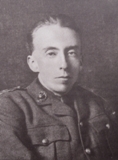
William James Jones, MM, Private, 9176, 2nd Battalion, Honorable Artillery Company. (Treffgarne). William’s award of the Military Medal was gazetted on 28 January 1918. William’s second award of the Military Medal was gazetted on 28 March 1918, and was for Italy. William was also awarded the French Croix-de-Guerre, which was published in the London Gazette of 25 January 1918.
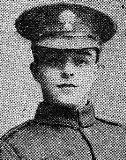
Fred Vivian Kelway, CdeG, Lieutenant, Wiltshire Regiment. (Milford Haven). Fred was the son of Robert Vivian Kelway and Alice Kelway, of 21, The Parade, Milford. He was commissioned into the Welsh Regiment, and later posted to the Wiltshire Regiment, and was attached to the Royal Flying Corps when he was awarded the French Croix-de-Guerre.
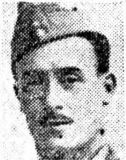
Arthur Kennea, MM, Lance Sergeant, 14347, 7th Battalion, King’s Shropshire Light Infantry. (Pembroke). Arthur’s award of the Military Medal was published in the London Gazette of 7 February 1919.
Stuart Leslie Keppel-Palmer, MC, Captain, 3rd Light Battalion, Tank Corps. (Haverfordwest). Stuart’s award was printed in the London Gazette of 9 January 1918, and read; ‘For conspicuous gallantry and devotion to duty. As Section Commander he led his section with the greatest gallantry, and when his ‘flag tank’ was out of action he joined another one until it became ditched. Being unable to get it into action again in spite of most strenuous exertions, he joined a third tank, which he directed with complete success, having on all of these occasions to pass fully exposed over many hundred yards of bullet-swept ground.’ Stuart was killed during the assault on the Hindenburg Line on 3 October 1918 and is buried at Prospect Hill Cemetery, Gouy. (See the Haverfordwest War Memorial).

Francis John Dobree Knowling, MC, Captain, 10th Battalion, Argyll and Sutherland Highlanders. (Tenby). Francis was awarded the Military Cross in the King’s Birthday Honours list of 3 June 1916. The citation of the award cannot presently be traced. He was killed on 8 March 1918 and is buried at Canada Farm Cemetery. (See the Tenby War Memorial).
William Arthur Ladd, MSM, Sapper, 71170, X Corps Signal Company, Royal Engineers. (Eglwyswrw). William’s award of the Meritorious Service Medal was published in the London Gazette of 18 January 1919. His two brothers, John and Owen, died as a result of the war.
Frank Charles Langley, MSM, Conductor, S/4912, Royal Army Ordnance Corps. (Neyland). Frank’s award of the Meritorious Service Medal was gazetted on 17 January 1919.
Ronald Hastings Lascelles, DSO, MID, Lieutenant-Colonel, Royal Horse Artillery, (Narberth). Ronald had served in the South African War, and was the holder of the DSO, which was listed in the London Gazette on 1 January 1916. Ronald was also awarded the French Croix de Chevalier, which was published in the London Gazette of 22 February 1916. He died of pneumonia, brought on by his service during the Great War on 16 February 1919.
Frederick Charles Lawrence, MC, Lieutenant, West Yorkshire Regiment. (Pembroke). Frederick was the son of Mr C. W. Lawrence, of Bush Street, Pembroke Dock. He had been wounded twice during the war, before being awarded the Military Cross. His award was published in the London Gazette of 17 July 1918, and read; ‘For conspicuous gallantry and devotion to duty. When early information as to the situation was urgently required during an attack he went forward on his own initiative from the reserve line to a very exposed position under heavy fire, and obtained information. During an enemy attack he rallied and reorganised his men under most difficult conditions, led them forward against greatly superior numbers, and drove the enemy back. He set a magnificent example of coolness and courage.’
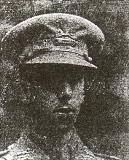
Joseph Layton, MSM, Battery Sergeant Major, 11735, Royal Garrison Artillery. (Milford Haven). Joseph award of the Meritorious Service Medal was published in the London Gazette of 14 June 1918.
David Leighton, MM, Bombardier, 371168, Pembrokeshire Royal Garrison Artillery. (Pembroke). David’s award of the Military Medal was mentioned in a local newspaper report, but the London Gazette date has not yet been traced.
Arthur Leonard, MSM, Company Quartermaster Serjeant, 11125, 3rd Battalion, Devonshire Regiment. (Pembroke). Arthur’s award of the Meritorious Service Medal was gazetted on 9 December 1919.
Sidney Lester, MSM, Sergeant, 371028, 1/1st Pembrokeshire Royal Garrison Artillery. (Milford Haven). Sidney’s award of the Meritorious Service Medal was published in the London Gazette of 12 April 1918.
Amy Lewis, ARRC, CdeG, Staff Nurse, Queen Alexandra’s Imperial Military Nursing Service Reserve. (Pembroke Dock). Amy was born in Sheffield, Yorkshire, on 26 April 1880 and trained at Chelsea Infirmary before joining the Queen Alexandra’s Imperial Military Nursing Service Reserve on 23 June 1916. She served during the Great War in the Salonika theatre of War from 1 July 1916, and was awarded the French Croix de Guerre ‘for her courage and coolness shown during the bombing of her hospital.’ She was invalided from Salonika on 28 August 1917, and served at Pembroke Dock Military Hospital for the rest of the war. Amy was awarded the Royal Red Cross, 2nd Class for her services at Pembroke Dock: ‘In recognition of valuable nursing services in connection with the War.’ (London Gazette 31 July 1919. She relinquished her appointment on 17 September 1920.
Ewart Edmund Lewis, MM, Sergeant, 91747, ‘C’ Battery, 177 Brigade, Royal Field Artillery. (Marloes). Ewart’s award of the Military Medal was listed in the London Gazette of 25 January 1918. He was killed during the opening of the German Spring Offensive on 21 March 1918 and is commemorated on the Pozières Memorial. (See the Marloes War Memorial).
James Henry Lewis, MC, Second Lieutenant, 24th Battalion, Welsh Regiment. (Haverfordwest). James was attached to the 1/7th Cheshires when he won his Military Cross. The citation was published in the London Gazette of 3 October 1919, and read: ‘In the operations near Menin, on 14th October, 1918, he led his platoon with great gallantry. Before reaching our barrage he captured a pill-box with one machine gun and fifteen prisoners, and later, in the second phase, rushed two more enemy machine guns and captured their crews. Throughout he inspired his men with confidence by his splendid example and untiring energy and fearlessness under heavy fire.’
James Llewellyn Lewis, MM, Private, 75497, 10th Battalion, Royal Welsh Fusiliers. (Monkton). James’s award of the Military Medal was published in the London Gazette of 7 February 1919.
John Cyril Morgan Lewis, Second Lieutenant, Royal Welsh Fusiliers. (Pembroke). John’s award of the Military Cross was published in the London Gazette of 17 August 1917. He had been attached to the London Regiment from the Royal Welsh Fusiliers. The citation read; ‘For conspicuous gallantry and devotion to duty. After reaching his objective he led his men forward under heavy fire to support the advanced waves, afterwards displaying exceptional courage and energy during consolidation and filling his men with confidence by his disregard of danger.’
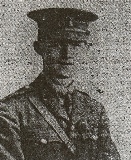
William J. Lewis, MM, Guardsman, 529, Welsh Guards. (Milford Haven). William’s award of the Military Medal was listed in the London Gazette of 11 January 1918.
Charles Llewellyn, MM, Private, 18207, 11th Battalion, Worcestershire Regiment. (Haverfordwest). Charles’ award of the Military Medal was published in the London Gazette of 29 August 1918. He was also awarded the French Medaille D’Honneur avec Glaives en Bronze, which was published in the London Gazette of 18 July 1919.
Evan Davies Llewellyn, MM, Corporal, 203575, 24th Battalion, Welsh Regiment. (Letterston). Evan’s award of the Military Medal was listed in the London Gazette of 13 September 1918. He was also awarded the Territorial Force War Medal.
Albert Seymour Lloyd, MM, Gunner, 15757, ‘C’ Battery, 78 Brigade, Royal Field Artillery. (Pembroke Dock). Albert’s award of the Military Medal was listed in the London Gazette of 19 September 1916. He was killed during the Battle of Arras on 19 April 1917 and is buried at Tilloy British Cemetery, Tilloy-Les-Mofflaines. (See the Pembroke Dock War Memorial).
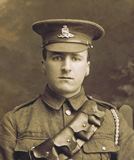
Henry Lloyd, MM, Corporal, T/069724, Royal Army Service Corps. (Pembroke). Henry served with No. 3 Company, 38th Divisional Train, Royal Army Service Corps throughout the war. He was awarded the Military Medal for Ypres, which was listed in the London Gazette of 25 September 1917. He survived the war, but died of influenza at the Hospital at Caudry, in Northern France on 25 November 1918, and is buried at Caudry British Cemetery, France. (See the Pennar War Memorial).
Sidney Charles Lloyd, MC, Second Lieutenant, 114th Siege Battery, Royal Garrison Artillery. (Pembroke). Sidney’s award of the Military Cross was published in the London Gazette of 8 March 1919, and read; ‘For conspicuous gallantry east of Le Cateau on the 30th October, 1918. While his major and he were looking for an observation post they came upon an enemy machine gun, which opened fire at fifty yards’ range. The major fell wounded in full view of the enemy, and was pulled on his back for fifty yards by this officer under machine-gun fire while still in, view, until finally a shell hole was reached.’
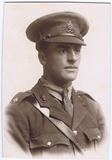
William John Lloyd, MM, Corporal, 371039, Royal Garrison Artillery. (Pembroke). William’s award of the Military Medal was noted in a local newspaper at the time. He was also awarded the Italian Bronze Medal for Military Valour, which was published in the London Gazette of 31 August 1917, but presently his Military Medal award has not been traced. William was also awarded the Italian Bronze Medal for Military Valour. Below is a photograph of him, post WW2.
John Rees Mabe, MSM, Corporal, S4/240517, Army Service Corps, HQ 47th (London) Division. (Camrose). John was awarded the Military Medal for his bravery at Vimy Ridge. The award was published in the London Gazette of 1 June 1917. He was also mentioned in despatches.
Henry Pierce Mackenzie, MID, Captain, 9th Battalion, Cameronians (Scottish Rifles). (Tenby). Henry was killed during the first day of the Battle of Loos, on 25 September 1915. (See the Tenby War Memorial).
David Richard Mason, MID, Lieutenant-Commander, H.M.S. Osmanieh, Royal Naval Reserve. (Tenby). David was mentioned in despatches in the London Gazette of 14 September 1917. He was later killed on 31 December 1917. (See the Tenby War Memorial).
Hugh Royds Stokes Massy, DSO, MC, MID, Major, Royal Field Artillery. (Cuffern, Pembs.). Hugh’s award of the DSO was published in the London Gazette of 1 June 1917. There was no citation published. Twelve months, on 2 June 1916, he had been awarded the Military Cross, and was also mentioned in despatches during his time at war, later becoming a Lieutenant-General, and serving during World War Two. He was High Sheriff of Pembrokeshire in 1946.
Thomas Gilbert Matthias, DSO, MID, Croix de Guerre, Major, 5th Battalion, Welsh Regiment. (Tenby). Thomas was born in Tenby on 12 August 1878, the son of Charles and Maria Mathias. He was commissioned into the 2nd Battalion, Welsh Regiment in 1898 and by the time of the outbreak of WW1 had risen to the rank of Major. Thomas was mentioned in despatches on 28 January 1916, and awarded the Distinguished Service Order in the King’s Birthday Honours List of 1 June 1917. He was given command of the 1st Newfoundland Regiment on 1 July 1918, and commanded the battalion during the final offensives of the war and until it returned to Canada. On 2 September 1919 was awarded the French Croix-de-Guerre, for his work with the battalion. He died at Torquay on 17 February 1956, aged 77.
Thomas Griffith Mathias, MM, Lance Corporal, 19971, 15th Battalion, Welsh Regiment. (Dinas Cross). Thomas’ award of the Military Medal was listed in the London Gazette of 7 June 1917. His original award certificate is in the Welsh Regiment Museum, and reads; ‘On night 29 April 1917 was first bayonet man in his bombing party. He killed two Germans and drove two others with our barrage. Showed great dash and coolness. Has previously been brought to notice by his Company Commander.’
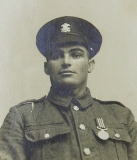
Henry John McAuley, MSM, Company Quartermaster Serjeant, 7862, Welsh Regiment. (Huddlestone). Henry’s award of the Meritorious Service Medal was gazetted on 14 June 1918.
John McClelland, DSM, Deck Hand, 9629SA, Royal Naval Reserve. (Milford). John was born on 4 December 1894, the son of William and Kate McClelland, of 22, Greville Road, Milford. He served as a Deck Hand aboard the famous Milford Haven based Q-Ship HMS Prize, which was captained by William Edward Sanders, VC, DSO. His award of the Distinguished Service Medal was published in the London Gazette of 22 June 1917, in the same issue of the London Gazette which saw Sanders Victoria Cross published. He was not aboard Prize when she was sunk on 14 August 1917. He died in 1972, aged 77.
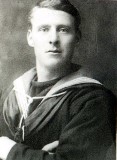
George McDonald, MBE, DSM, Skipper, Royal Naval Reserve. George was born at Hull on 23 February 1888, and came to Milford Haven to work in the Fishing Fleet. He joined the Royal Naval Reserve as a 2nd Hand at Milford on 1 April 1912. During the war George served as Second Hand aboard the requisitioned steam trawler HMT Hibernia II, which had been converted for duties as a Mine Sweeper. He was awarded the Distinguished Service Medal: ‘In recognition of services in Mine-sweeping operations between the 1st July, 1916 and the 31st March, 1917.’ (London Gazette 29 June 1917. George continued to serve in the Fishing Fleet between the wars, and in World War Two served as Skipper of a Minesweeper, being made Member of the British Empire for his services in the latter war. (London Gazette 3 January 1945).
Patrick H. McDonnell, DCM, Corporal, 16212, 2nd Battalion, Grenadier Guards. (Pembroke). Patrick’s award of the Distinguished Conduct Medal was published in the London Gazette of 6 November 1914, and read: ‘On 27th September made a first rate reconnaissance and discovered an unsuspected German trench.’ Patrick later transferred to the Welsh Guards.
David William Miles, MID, RQMS. (Llangwm). An article in the Haverfordwest and Milford Telegraph stated that David, the son in law of Reverend Evans, of Llangwm, had been mentioned in despatches. He cannot presently be identified.
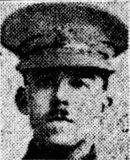
Charles Davie Millar, AM, Leading Seaman, O.N. 218811, Royal Navy. (Pembroke Dock). Charles was one of two men in Pembrokeshire to be awarded the rare Albert Medal during the war. The citation was published in the London Gazette of 9 October 1918, and read: ‘In recognition of his gallantry in the following circumstances: On the 29th June 1918 an outbreak of fire occurred on board Motor Launch No. 483 whilst refuelling alongside the jetty at Pembroke Dock, the fire being caused by the ignition of an overflow of petrol from the hose. Leading Seaman Millar, H.M.S. P.C. 51, who was walking up and down the forecastle of his ship, on seeing the flames break out on the upper deck of the motor launch, immediately slid over the bows of his craft on to the motor launch, rushed aft, and removed the primers of the depth charges. He then forced his way through the flames and kicked the hose overboard, getting his clothes ignited as he did so. Having extinguished his burning clothing by jumping overboard, he climbed inboard again and assisted in getting the motor launch in tow. This man displayed initiative and disregard of danger, and by his prompt action he probably averted a serious accident. Had the depth charges detonated, very great damage would have been done and lives undoubtedly lost.’
Joseph A. Mooney, MSM, Staff Sergeant, S/29503, Army Service Corps. (Pembroke). Joseph’s award of the Meritorious Service Medal was gazetted on 28 December 1917.
Arthur Lewis Morgan, CdeG, Lance Sergeant, 33256, 13th Battalion, Royal Welsh Fusiliers. (Solva). Arthur’s award of the Belgian Croix-de-Guerre was published in the London Gazette of 9 July 1918.
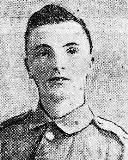
Benjamin Morgan, MM, Private, 320351, 24th Battalion, Welsh Regiment. (Boncath). Ben’s award of the Military Medal was listed in the London Gazette of 19 March 1918, and was for rescuing his wounded friend and comrade, Hugh Slader Glanville, of Llanteg who later died, under heavy enemy fire. He was presented with the medal by the Duke of Connaught in Jerusalem on 20 March 1918. Benjamin tragically died on New Year’s Eve, 1927.
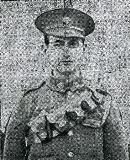
George Morgan, DCM, Corporal, 36243, 15th Battalion, Welsh Regiment. (Henllys) George’s award of the Distinguished Conduct Medal was published in the London Gazette of 3 September 1918, and read: ‘For conspicuous gallantry and devotion to duty in handling his troops and rallying his men. When the enemy worked round his flank he stuck to his ground and offered material resistance. His value to his officers was infinite. He was wounded, but made efforts to continue resistance until ordered to the aid post.’
Henry Morgan, MM, Gunner, 371152, 146th Battery, Royal Garrison Artillery. (Prendergast). Henry’s award of the Military Medal was published in the London Gazette of 30 October 1917, so was probably for Third Ypres.
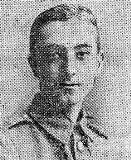
Howard James Garfield Morgan, MC, Lieutenant, 8th Canadian Machine Gun Company. (Milford Haven). Howard’s award of the Military Cross for Vimy Ridge was published in the London Gazette of 24 July 1917, and read: ‘For conspicuous gallantry and devotion to duty. He gallantly brought two machine guns into action under heavy hostile fire, and dispersed a large party of the enemy. He displayed great courage and initiative throughout the operations.’
Richard Morgan, MM, Lance Corporal, 1910, 4th Battalion, Guards Machine Gun Regiment. (Cilgerran). Richard’s award of the Military Medal was published in the London Gazette of 21 January 1919.
Theodore Guthrie Morgan, MC, Captain, Welsh Regiment. (Tenby). Guthrie was the son of Reverend Vyrnwy Morgan, of Tenby. He was commissioned into the Welsh Regiment, and was awarded his Military Cross whilst serving with the 11th Welsh in Salonika. The award was gazetted on 17 April 1917, and read: ‘ For conspicuous gallantry in leading his party to the assault. He was instrumental in capturing several prisoners and set a splendid example throughout the raid.’ He had been a well known football player, having played for Aberavon prior to the war and being in the side which won the Welsh Cup. He died in Dover in 1973.
Thomas Griffith Morgan, DCM, MM, Sergeant, 50459, 2nd Battalion, Imperial Camel Corps. (Robeston Wathen). Thomas’s award of the Distinguished Conduct Medal was published in the London Gazette of 2 September 1919, and read: ‘At Amman on 27th to 30th March, 1918, and on all occasions has shown a splendid example in and out of action to the men under his command. As signalling serjeant to the battalion he has always kept up a high state of efficiency.’ His Military Medal was published in the London Gazette of 31 December 1918.
William Marychurch Morgan, AM, MC, Second Lieutenant, Royal Welsh Fusiliers. (Jeffreyston). William was born in Jeffreysone in 1892, the second of three sons of William and Elizabeth Morgan. The family moved around Wales due to their fathers work as a Congregational Minister and the children were all privately educated. William and his two brothers, Geoffrey Penney Morgan and Henry Hall Morgan, gained commissions into the Royal Welsh Fusiliers, William after serving with the Honorable Artillery Company. Upon being commissioned he joined the 15th (London Welsh) Battalion, Royal Welsh Fusiliers, and landed in France with the battalion during December 1915. His bravery was soon put to the test while at grenade school in Locon on 21 May 1916. The London Gazette of 14 February 1916 published the citation which led to him being awarded the rare Albert Medal: ‘For picking up and throwing away a live grenade during grenade instruction, having to grope for grenade in the mud, thus saving several lives.’ He survived the carnage of Mametz Wood later that year and was awarded the Military Cross soon after. The citation was published in the London Gazette and read: ‘For conspicuous gallantry in action. On seven consecutive nights he carried out valuable reconnaissances under intense fire. Later, he led a daring raid, himself accounting for one of the enemy. He has previously done very fine work.’ William later became promoted Lieutenant Colonel and after the war commanded the 3rd Battalion, 9th Jat Regiment of the Indian Army. He died in Gloucester on 23 October 1944 and was buried in Jeffreyston. His brother Geoffrey was killed on the Somme on 14 July 1916 and is commemorated at Jeffreyston, while Henry retired as a Major and died in 1953.
Benjamin Roblin Morris, MM, Sergeant, 20549, 15th Battalion, Welsh Regiment. (Haverfordwest). Ben’s award of the Military Medal was listed in the London Gazette of 11 February 1919.
Ernest Morse, MM, Sergeant, 10487, 15th Battalion, Welsh Regiment. (Manorbier). Edward’s award of the Military Medal was listed in the London Gazette of 11 February 1919.
Edward Mortimer, MM, Guardsman, Coldstream Guards. (Herbrandston). Edward was reportedly awarded the Military Medal, before being discharged due to wounds.
Christmas Moss, MM, Private, 38509, 7th Battalion, King’s Shropshire Light Infantry. (St. Davids). Christmas’ award of the Military Medal was published in the London Gazette of 21 January 1919.
John Edward Moss, MSM, Sergeant, 158096, Royal Garrison Artillery. John is commemorated on the Men of Pembroke War Memorial. Nothing further can be traced about him.
Albert Leslie Neale, MC, Lieutenant, Royal Flying Corps. Albert was born at Milford on 28 January 1896, the son of Albert Ezra and Lilian Gostelow Neale. He was commissioned into the Lincolnshire Regiment during the Great War, training as a pilot before becoming an artillery observer with the Royal Flying Corps. He was awarded the Military Cross for this work, the citation of which was published in the London Gazette of 25 May 1917, and read: ‘For conspicuous gallantry and devotion to duty on many occasions. He carried out two successful contact patrols, flying for a considerable period very low and on our barrage, rendering very complete reports on each occasion. He rendered particularly good service in observing for siege batteries.’ He later commanded 60 Squadron, RFC, and remained with 31 Squadron, RAF after the war. During World War Two he rejoined the army, and was posted to the H.Q. of the 3rd Anti Aircraft Brigade, Royal Artillery. Albert died on active service in London on 3 May 1941, aged 45, and is commemorated on the Brookwood Memorial, Surrey.
Bert Novis, MM, Private, 41349, 1/7th Battalion, Worcester Regiment. (Pembroke Dock). Bert’s award of the Military Medal was published in the London Gazette of 30 October 1917. He was killed later in the war. (See the Pembroke Dock War Memorial).
Edward O’Connell, DCM, MID, Company Sergeant Major, 6184, 8th Battalion, Welsh Regiment. (Hook). Edward’s award of the Distinguished Conduct Medal was published in the London Gazette of 11 March 1916, and read: ‘For conspicuous gallantry on 9th August 1915, near Anzac, when, although wounded early in the day, he remained with his Company until dark, displaying great courage and resource.’ He had been mentioned in despatches for the same action, on 28 January 1916.

George Law O’Donnell, MM, Sergeant, 62916, Royal Field Artillery. (Pembroke). George’s award of the Military Medal was published in the London Gazette of 12 July 1918.
Charles Archibald Oliver, DCM, Sergeant, 11246, Royal Berkshire Regiment. (Pembroke). Charles’s award of the DCM was published in the London Gazette of 22 September 1916, which read: ‘For conspicuous gallantry. He carried in on his back, under heavy shell fire and along a trench waist deep in liquid mud, a man of his patrol who had been wounded.’
Percy Harold Outram, MM, Private, 39452, 38th Field Ambulance, Royal Army Medical Corps. (Tenby). Percy’s award of the Military Medal was published in the London Gazette of 21 January 1919.
Augustus Charles Owen, MC, Second Lieutenant, 8th Battalion, Somerset Light Infantry. (Tenby). Augustus’ award was printed in the London Gazette of 13 September 1918, and read; ‘For conspicuous gallantry and devotion to duty. At a critical moment he held his position with a small party of men against an enemy attack delivered after heavy bombardment. By his fine example of courage and determination lie enabled the line in that part of the field to be restored.’ He was sadly killed during the same action, on 6 August 1918, and is buried at St. Amand British Cemetery. (See the Tenby War Memorial).
Benjamin Owen, MM, 97904, Driver, Royal Field Artillery. (Hermon). Benjamin was the son of Phoebe Owen, of Llwyn-yr-eos, Hermon. He worked as a collier at Tumble prior to the war and was underage when he enlisted there on 31 August 1914 into the Royal Field Artillery. He served in France from 8 July 1915, and was awarded the Military Medal for bravery in the field whilst attached to the 15th Divisional Ammunition Column. The award was gazetted on 18 June 1917. Benjamin was discharged due to wounds in August 1918 and returned to Hermon, where he died in 1960, aged 63.
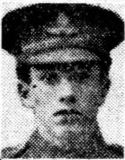
Frank Palmer, MM, Private, 201142, 4th Battalion, Welsh Regiment. (Pembroke). Frank’s award of the Military Medal was listed in the London Gazette of 19 March 1918.
Edward John Parkman, MM, Corporal, 14106, 56th Siege Battery, Royal Garrison Artillery. (Pembroke Dock). Edward’s award of the Military Medal was listed in the London Gazette of 16 October 1917. He died on 23 May 1918 and is buried at Doullens Communal Cemetery Extension, No. 2.
Edgar Edward Parrington, MID, Sergeant (Instructor), S/5175, Royal Army Ordnance Corps. (Pembroke Dock). Edgar died of pthisis on 5 December 1918.
Wilfred Owen Parry-Davies, MC, Second Lieutenant, 192nd Siege Battery, Royal Garrison Artillery. (Puncheston). Wilfred’s award of the Military Cross was published in the King’s Birthday Honours list of 30 May 1919.
Robert J. Pearman, MSM, Conductor, S/4350, Army Ordnance Corps. (Pembroke Dock). Robert’s award of the Meritorious Service Medal was gazetted on 14 June 1918.
Frederick Charles Pellow, DSM, Able Seaman, 196467, Royal Navy, HMS Caesar. (Pembroke Dock). Frederick’s award was listed in the London Gazette of 12 May 1916, which stated that ‘The following awards have been approved in recognition of the services of Petty Officers and men of the Eastern Mediterranean Squadron during the evacuation of the Gallipoli Peninsula in December, 1915-January, 1916.’ Frederick didn’t survive the war. (See the Pembroke Dockyard War Memorial).
Edmund Perkins, DCM, Sergeant, 33429, D/50th Brigade, Royal Field Artillery. Edmund’s award of the Distinguished Conduct Medal was published in the London Gazette of 18 October 1918, and read: ‘For conspicuous gallantry and devotion, to duty all the time he has been with his battery. On two occasions he displayed exceptional coolness and promptitude in extinguishing ammunition dumps set on fire by enemy shelling.’ Edmund was killed on 25 April 1918, and is buried at Grootebeek British Cemetery, Belgium.
Sir Ivor Philipps, KCB, DSO, Major-General, Pembrokeshire Yeomanry. (Cosheston). Ivor was the brother of Viscount St. David’s, and had been a Liberal MP, and close friend of David Lloyd George, prior to the war. He had served in the army for many years prior to this, after being commissioned into the Indian Army in 1883, and had seen service in India, Burma and China, before retiring from the army, and joining the Pembroke Yeomanry. He was awarded the Distinguished Service Order for his services during the Boxer Rebellion in 1900. He was promoted to Brigadier General and given command of 115 Brigade, 38th (Welsh) Division early in the war, and was given command of the entire division prior to its move to France in December 1915. He was relinquished of his command after the initial failure of the division’s first attack on Mametz Wood on 7 July 1916 and returned to his home at Cosheston, where he died on 15 August 1940, after resuming his political career and taking charge of the rebuilding of Pembroke Castle.
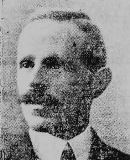
The Hon. Roland Erasmus Philipps, MC, Captain, 9th Battalion, Royal Fusiliers. (Roch and Manorbier). Roland’s award was published in the London Gazette of 14 April 1916, and read; ‘For conspicuous gallantry and devotion to duty. Although wounded severely he kept his men well in hand, himself killing four of the enemy with his revolver. He stuck to his post and repelled three attacks.’ Roland was killed on the Somme on 7 July 1916 and is buried in Aveluy Communal Cemetery Extension. He was the son of the Rt. Hon. the 1st Viscount St. David’s, of 3, Richmond Terrace, Whitehall, London. (See the Roch and Manorbier War Memorial).
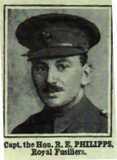
David Lewis Phillips, MM, Private, 320071, 24th Battalion, Welsh Regiment. (Begelley). David’s award of the Military Medal was listed in the London Gazette of 13 March 1919.
Private Phillips, Sergeant, MM, 85th Labour Company. (Glogue). A newspaper clipping reported that Sergeant Phillips, of Ffynondeg, Glogue had been awarded the Military Medal. He cannot presently be identified.
Thomas Llewellyn Philips, Gunner, 371218, 88th Siege Battery, Royal Garrison Artillery (Cosheston). Thomas’ award of the Medaille d’Honneur avec glaives en Bronze was published in the London Gazette of 18 July 1919.
William Henry Phillips, MSM, Deckhand, ON/262/DA, Royal Naval Reserve, HMS Idaho. (Milford Haven). William was reported as having been awarded his Meritorious Service Medal at Milford on 11 December 1919. The award had originally been published in the London Gazette of 8 April 1919.
Bertie Picton, MM, Sergeant, 371050, Pembrokeshire Royal Garrison Artillery. (Milford). Bertie’s award of the Military Medal was published in the London Gazette of 2 November 1917.
Edward A. Player, DCM and Bar, Corporal, 5018, 2nd Battalion, Wiltshire Regiment. (Pembroke). Edwards first award of the DCM was gazetted on 5 August 1915. No citation has yet been traced. He was awarded a Bar to his DCM, which was published in the London Gazette of 10 March 1916, the citation of which read; ‘For conspicuous gallantry; he repeatedly brought in wounded men from the open, under heavy fire. After the battalion had been withdrawn, he went several times to the front to tend and bring in wounded men.’
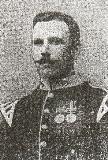
William Powell, MSM, Sergeant, 118980, 214th Siege Battery, Royal Garrison Artillery. (Milford Haven). William’s award of the Meritorious Service Medal was gazetted on 17 January 1919.
George Cyril Pratt, MM, Gunner, W/4416, Royal Field Artillery. (Milford Haven). George’s award of the Military Medal was listed in the London Gazette of 28 September 1917.
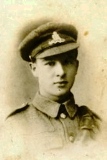
Frederick M. Preece, MM, Sapper, 22721, Royal Engineers. (Pembroke). Frederick’s award of the Military Medal was listed in the London Gazette of 31 December 1915.
James Charles Woolmer Price, DSC, MID, Midshipman, Royal Navy, HMS Ocean. (Milford Haven). James’s award of the Distinguished Service Cross came after his ship had been torpedoed off the coast of Gallipoli. The citation which was published in the London Gazette of 16 August 1915 read: ‘To receive the Distinguished Service Gross. Sub-Lieutenant (now Acting Lieutenant) Stephen Augustus Bayford, R.N.R., H.M.S. Majestic. Midshipman James Charles Woolmer Price. H.M.S. Ocean. These officers were both in command of picket boats on night of 13th-14th March. When ” Ocean’s” boat lay helpless, having been struck in the boiler-room by a shell, Majestic’s took her in tow, under heavy fire, the conduct of these two young officers being altogether admirable, as was their handling of their boats.’ He was also mentioned in Vice Admiral Carden’s despatch of 17 March 1915, which was published in the London Gazette of 29 April 1919.
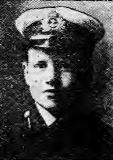
James Prout, MM, Private, 16341, 6th Battalion, South Wales Borderers. (Saundersfoot). James was from Saundersfoot, but had moved to Ammanford several years prior to the war. His award of the Military Medal was published in the London Gazette of 10 November 1916, and was for gallantry on the Somme.
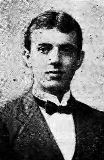
Henry Brynmor Raymond, DCM, Sergeant, 8997, 72nd Army Brigade, Royal Field Artillery. (Milford Haven). Henry’s award of the Distinguished Conduct Medal was published in the London Gazette of 13 February 1917, and read: ‘For conspicuous devotion to duty. He has rendered very valuable services throughout, and by his devotion to duty has shown a fine example to all ranks.’ Henry died on 28 October 1918 and is buried at Cambrai East Military Cemetery. (See the Milford Haven War Memorial).
Basil Tobin Ready, OBE, MID, Major, Welsh Regiment. (Tenby). Basil was born on 17 May 1871, the son of Colonel John Tobin Ready and Helen Jane Teresa Ready. He had served with the Welsh Regiment for many years prior to the war and commanded an Officer Cadet Battalion throughout the conflict. For his services he was awarded the Order of the British Empire (OBE) in the King’s Borthday Honours list of 1918 and was mentioned in despatches on 15 April 1919. His son, Charles Peter Ready, was killed during WW2.
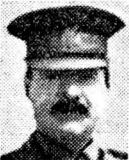
Benjamin Rees, DCM, MM and Bar, Private, 24740, 17th Battalion, Lancashire Fusiliers. (Fishguard). Benjamin’s award of the Distinguished Conduct Medal was published in the London Gazette of 14 February 1919, and the citation, published on 9 January 1920, read; ‘For conspicuous gallantry and extreme devotion to duty during operations east of Ypres 28th September – 2nd October, 1918. As linesman he went out time after time under heavy fire, repairing the lines immediately they were broken. Through his splendid disregard of danger and energy communication was maintained for his battalion and two other brigades.’ He had won the Military Medal on 16 July 1918, and was awarded a Bar to his MM on 4 October 1918.
James Rees, MM, Private, 49012, 9th Battalion, Royal Welsh Fusiliers. (Pembroke). James’ award of the Military Medal was published in the London Gazette of 10 September 1918.
John Rees, MM, Sapper, 67378, 124th Field Company, Royal Engineers. (Little Haven). John’s award of the Military Medal was published in the London Gazette of 13 May 1919.
Lewis Archibald Rees, MM, Sergeant, 47957, ‘X’ 50th Trench Mortar Battery, Royal Garrison Artillery. (Angle). Lewis’ award of the Military Medal was listed in the London Gazette. He died of wounds on 15 February 1917 and is buried at Bray Military Cemetery. (See the Angle War Memorial).
William Richards, MC, Lieutenant, 29th Battalion, Machine Gun Corps. (Poyston). William’s award of the Military Cross was published in the London Gazette of 2 July 1918, and read: ‘For conspicuous gallantry and devotion to duty. Whilst in charge of four machine guns he suddenly found himself attacked in rear by large numbers of the enemy. Realising the situation, he moved his four guns and two guns of another section across the front of the enemy attack, and from a commanding position brought devastating fire to bear on the enemy at close range, which entirely held up their advance. With three additional guns he organised a defensive line, and having located two hostile machine guns, he put these out of action as soon as they opened fire, and also dispersed two other gun crews which were coming into action. Later, he took charge of another four guns, which he placed in defensive positions on the flank. He set a fine example of initiative, resource and courage during a critical period.’
Hugh Thomas Kay Robinson, DSO and Two Bars, Lieutenant-Colonel, 13th Battalion, Royal Sussex Regiment, (Walwyn’s Castle). Hugh was the commander of 13th Sussex, and won the DSO three times during his time at war. The third award was listed in the London Gazette of 13 September 1918 and read; ‘For conspicuous gallantry and devotion to duty while commanding a composite battalion. He handled his battalion, in such a way as to prevent the enemy entering a gap in the line, and so turning the right flank of the division. Later, when in command of another battalion, he, by skilful leadership and courageous example, caused the enemy’s advance to be checked at a critical moment with heavy loss.’ (His first DSO was gazetted 4 June 1917, and his 1st Bar gazetted 17 December 1917). He was killed during the German Offensive in Flanders on 26 April 1918.
Norman Vaughan Robinson, MC, Second Lieutenant, 10th Battalion, Rifle Brigade. (Milford Haven). Norman’s award of the Military Cross was published in the King’s Birthday Honours list of 4 June 1917.
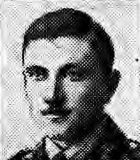
John Aldridge Roch, MC, Lieutenant, Welsh Regiment (Attached Machine Gun Corps). (Pembroke). John’s award of the Military Cross was published in the London Gazette of 23 November 1917, and read; ‘For conspicuous gallantry and devotion to duty in nightly, and on two occasions twice per night, leading his pack transport through heavy enemy barrages and gas to the gun position, so that his company were never on any occasion short of ammunition, rations or water. His transport lines were bombed on three occasions, resulting in the loss of five animals and ten men. His coolness and prompt action saved much suffering to wounded men and horses.’
Frank Rogers, MM, Lance Corporal, 26388, 17th Battalion, Welsh Regiment. (Bosherston). Frank was awarded his Military Medal in the London Gazette of 14 September 1917. The War Diary of the 17th Welsh read; ‘In daylight on the afternoon of 29th July 1917 L/Cpl F. Rogers seeing a German soldier in No Man’s Land about 300 yds away from our Lines, left our trenches alone, stalked and captured the German who tried twice to escape.’ He was later killed at Bourlon Wood on 25 November 1917. (See the Bosherston War Memorial).
Thomas Henry Rogers, DCM, Sergeant, 67540, 123rd Field Company, Royal Engineers. (Neyland). Thomas’s award of the Distinguished Conduct Medal was published in the London Gazette of 5 December 1918, and read: ‘For conspicuous gallantry and devotion to duty. Under continuous enemy gas and shell fire, he supervised the removal of wounded and gassed cases, and then, though gassed himself, returned and rendered valuable assistance in constructing a pontoon bridge. On other occasions he has also displayed great courage.’
Thomas W. Rogers, MM, Corporal, 27860, 18th Battalion, Welsh Regiment. (Summerhill). Thomas award of the Military Medal was listed in the London Gazette of 12 December 1917. He later transferred to the Loyal North Lancashire Regiment.
George Thomas Sydney Rumball, MC, Lieutenant, 2nd Battalion, Royal Fusiliers. (Haverfordwest). George’s award of the Military Cross was published in the London Gazette of 25 September 1917. He was killed on 13 April 1918. (See the Haverfordwest War Memorial).
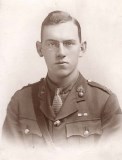
Richard Victor Harley Roseveare, MC, Second Lieutenant, 64 Battery, 5th Brigade, Royal Field Artillery. (Caldy). Richard’s award of the Military Cross was published in the London Gazette of 23 October 1916, and read: ‘For conspicuous gallantry and devotion to duty. When the Battery Commander and two other senior officers had become casualties, Second Lieutenants Roseveare and White took charge and did fine work for eight days, until they were both wounded. They set a fine example, and kept up the spirits of the battery under heavy fire.’ He was also awarded the French Croix-de-Guerre on 12 December 1919.
George Julian Ryan, DSO, Lieutenant Colonel, 2nd Battalion, Royal Munster Fusiliers, (Tenby). George had served in the South African and Sudan campaigns, and had risen through the ranks to command the 2nd Munsters during the Great War. He was the holder of the DSO, which was awarded for his service in South Africa, and listed in the London Gazette of 27 September 1901, and the Order of the Medjidie (Turkey). George was killed on 23 January 1915. (See the Tenby War Memorial).
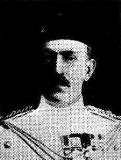
William David Sambrook, DSM, Air Mechanic, Royal Naval Air Service. (Cilgerran). William was the son of William and Elizabeth Sambrook, of Craigyfelyn, Cilgerran. He originally served with the Royal Naval Reserve, aboard HMS Alsatian, before transferring to the Royal Naval Air Service as an Air Mechanic. He was awarded the Distinguished Service Medal in the London Gazette of 14 September 1917 for ‘Services to the Royal Naval Air Service’. William was commissioned as a Probationary Flight Sub Lieutenant in the RNAS on 30 October 1917, and became a pilot. He lived in Y Bryn Durland, Llangwm after the war, and died on 14 September 1963, aged 69.
George Edward Blunt Saville, MM, Lance Corporal, 8528, Welsh Regiment. (Pembroke). George lived at 22, Owen Street, Pembroke and served with the 2nd Battalion, Welsh Regiment. He was awarded the Military Medal during the last months of the war. The award was gazetted on 17 June 1919.
Stephen John Scurlock, MC, Lieutenant, 1st Battalion, Lancashire Fusiliers. (Neyland). Stephen’s award of the Military Cross was published in the London Gazette of 5 November 1918, and read: ‘For conspicuous gallantry and devotion to duty. After his company commander had been killed he ably reorganised his company, who had suffered severe casualties, under heavy fire. He also made a personal reconnaissance and brought back’ very valuable information. He did fine work.
Robert Henry George Seabourne, MM, Private, 10581, 1st Battalion, South Wales Borderers. (Pembroke). Robert’s award of the Military Medal was published in the London Gazette of 13 June 1919.
Noel Parkin Sellick, MC, Lieutenant, Northumberland Fusiliers. (Milford Haven). Noel’s award of the Military Cross was published in the London Gazette of 13 September 1918, and read: ‘For conspicuous gallantry and devotion to duty. He handled his Stokes mortars with great skill. Learning that an enemy machine gun was inflicting casualties on the infantry in -the front line, he led his men forward through a heavy barrage, and from an exposed position directed fire on the machine gun and knocked it out.’
George Henry Setterfield, MID, Skipper, WSA59, Royal Naval Reserve. George was mentioned in despatches and was awarded the French Medaille Militaire in the London Gazette of 14 February 1919, for distinguished service at sea during the war. His son Edward was killed during the Second World War.
John Henry Sewell, MM, Private, 25352, 1st Battalion, Lincolnshire Regiment. (St. David’s). John’s award of the Military Medal was published in the London Gazette of 7 February 1919.
Reginald Sharpe, MM, Sergeant, 30729, Royal Garrison Artillery. (Pembroke). Reginald’s award of the Military Medal was listed in the London Gazette of 6 July 1917.
Charles H. Shephard, MM, Bombardier, 21933, Royal Garrison Artillery. (Pembroke Dock). Charles’ award of the Military Medal was published in the London Gazette of 25 September 1917.
Leonard Ernest Silcox, MBE, DSO, MID, Major, 506318, 4th Battalion Railway Transport Troops, Canadian Engineers. (Pembroke Dock). Leonard was awarded the Distinguished Service Order in the King’s Birthday Honours list of 3 June 1919. He was also mentioned in despatches and awarded the Member of the British Empire during the war.
Hugh Evan Skyrme, MM, Corporal, 63863, Special (Gas) Company, Royal Engineers. (Pembroke). Hugh’s award of the Military Medal was published in the London Gazette of 19 January 1917. A citation was published in a local newspaper, which read; ‘On October 2nd, 1916, the Germans were bombarding the British lines very heavily, and a gas cylinder was punctured. The escape of gas led to very great danger to French troops, and he, at great risk to his own life, went out into the open, and buried the cylinder. After doing so, although he was seriously gassed, he returned to his duty for two hours, emptying other cylinders, and so preventing a serious catastrophe.’ Hugh was later Commissioned into the Royal Welsh Fusiliers on 17 July 1917.
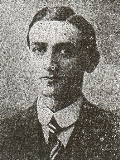
George Gordon Smith, DCM, MM, Battery Sergeant Major, 966, Royal Horse Artillery. (Pembroke Dock). George was from Southampton originally but his parents later moved to Pembroke Dock. He served throughout the war with I Battery, 7th Brigade, Royal Horse Artillery, gaining the award of the Military Medal and the Distinguished Conduct Medal during the course of the war. The citation for his DCM was published in the London Gazette of 3 September 1919 and read: ‘He has constantly found himself in charge of the battery wagon lines. In the running fighting in which the battery has been engaged, these lines have been shelled, often severely, in nearly every position taken up. When this has occurred his power of command and coolness have been invaluable. His gallantry in action has been conspicuous on many occasions; particularly was this the case throughout the retreat in March, when his fearless example was often instrumental in inspiring confidence and ensuring steadiness among those with him.’ George served again during World War Two and died on 9 September 1945.
Thomas S. Smith, DCM, Sergeant, 18439, 1st Battalion, Shropshire Light Infantry. (Pembroke). Thomas’s award of the Distinguished Conduct Medal was published in the London Gazette of 29 July 1919, and read: ‘During the attack at Vaux Andigny, on the 17th October, 1918 he displayed great gallantry and initiative in leading his platoon against the enemy position. His company was in close support, and on seeing that the leading company was confronted with uncut wire entanglements and under heavy machine-gun fire and bombing at short range, he led his men straight to the wire, and with them cut a way through and reached the objective. Then, finding that the unit-on his left was out of touch, he led a party along the trench and cleared the flank, himself killing six of the enemy. He showed the greatest gallantry throughout and did splendid work.’
William Edmond Logan Stewart, DSO, Captain, Pembroke Yeomanry. (Cilgerran). William was awarded the Distinguished Service Order ‘In recognition of services during the operations in South Africa’, during the Boer War of 1899-1901, while serving with the Imperial Yeomanry. The award was published in the London Gazette of 31 October 1902. He later served during the Great War with the Pembroke Yeomanry and 24th Battalion, Welsh Regiment.
Hugh Adrian Innes Blyth Stokes, MC, Second Lieutenant, 2nd Battalion, Oxfordshire and Buckinghamshire Light Infantry. (Milford Haven). Hugh’s award of the Military Cross was published in the London Gazette of 29 July 1919, and read; ‘While forming up for the attack near Rumilly on October 1st, 1918, he was wounded but remained with his platoon and advanced with it to the attack. Under very heavy rifle and machine-gun fire from three sides he reorganised his men into groups, thereby avoiding many casualties and enabling the advance to proceed. Later, when further advance became impossible, he, though wounded a second time, stayed and encouraged his men until every other wounded man had been got away. He showed great courage and devotion to duty.’ He had already died of his wounds on 28 November 1918. (See the Milford Haven War Memorial).
George William Album Summons, DCM, Corporal, 63047, 9th Battalion, Welsh Regiment. (Milford Haven) George’s award of the Distinguished Conduct Medal was published in the London Gazette of 11 March 1920: ‘For marked gallantry and dash during the fighting in October and November 1918. In particular on 4th November 1918 near Jenlain, when his company was held up by an enemy machine gun he, single-handed, rushed the gun, put the crew to flight, and this enabled his company to continue their advance.’ He was also awarded the Romanian Medaille Barbatie si Credinta, 1st Class, which was Gazetted on 19 September 1919.
David Frank Sweet, MSM, Company Sergeant Major, M/18257, Royal Army Service Corps. (Penally). David’s award of the Meritorious Service Medal was listed in the Peace Gazette of 30 May 1919.
James Taylor, MM, Private, 28674, 7th Battalion, Royal Inniskilling Fusiliers. (Pembroke). James’ award of the Military Medal was published in the London Gazette of 1 February 1918.
Albert Thomas, DSM, Able Seaman, D/229664, Royal Navy, HM Submarine E11. (Hundleton). Albert was a crewman aboard the submarine E11, which crept through the Dardanelles straits before causing havoc to Turkish shipping in the Sea of Marmora. Albert’s award was listed in the London Gazette of 10 September 1915, and read; ‘With reference to the notices which appeared in the London Gazette of the 10th April and 21st May, 1915, the following are the names of men awarded the Distinguished Service Medal for service in submarines in the Sea of Marmora.’
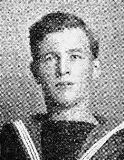
Benjamin Stewart Thomas, MC, Lieutenant, 11 Squadron, Royal Air Force. (Pembroke Dock). Benjamin had gained his MC while with the 9th Welsh, before volunteering for pilot training and joining the Royal Air Force. He was killed when his Bristol F2b, Serial D7978 was shot down over the Somme on 4 October 1918, and he is buried at Grevillers British Cemetery. (See the Pembroke Dock War Memorial).
Geoffrey Lynn Thomas, MC, Captain, 95th Brigade, Royal Field Artillery. (Pembroke). Geoffrey’s award of the Military Cross was published in the London Gazette of 14 November 1916, and read; ‘For conspicuous gallantry in action. An ammunition dump being set on fire, he led a party and extinguished the flames, displaying great courage and coolness. He set a fine example to his men.’ Geoffrey was later killed on 6 June 1918, and is named on the Pembroke County War Memorial.
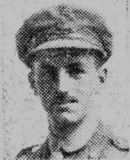
George Thomas, MM and Bar, Private, 10086, 2nd Battalion, Welsh Regiment. (Haverfordwest). George’s award of the Military Medal was listed in the London Gazette of 1 September 1916. The citation was published in a local newspaper, and read: ‘For great bravery at Munster Alley on July 26, 1916. He carried bombs and ammunition up to the sap over the open under very heavy fire. He also displayed great bravery and coolness as a bomber at the sap head’. He later gained a Bar to his MM, which was listed in the London Gazette of 29 August 1918. George died of wounds on 6 June 1918 and is buried at Pernes British Cemetery. (See the Haverfordwest War Memorial).
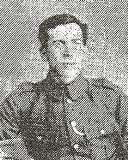
George Ernest Thomas, MID, Lieutenant (A/Major), Pembroke Royal Garrison Artillery. (Goodwick). George was mentioned in despatches on 20 December 1918.
Griffith Thomas, MM, Private, 11621, Devonshire Regiment. (Llanycefn). Griffith was the son of Benjamin and Martha Thomas, of Halfway House, Llanycefn, Clynderwen. He served with the 10th Battalion, Devonshire Regiment. His award of the Military Medal was published in the London Gazette of 18 June 1917. The citation for the award read: ‘On the nights 10/11th February 1917 this man was a leading man in a party of bombers. After reaching several dug-outs, which he assisted to bomb, and in which many were dead and subsequently found, he was the first to enter, without hesitation, a large gallery of some 50 to 60 feet long, in which there were 64 bunks. By the bold front he showed he forced 15 men in this gallery, who had taken up a threatening attitude, to surrender. He then searched the gallery from end to end, which only had a dim light in it, in company with his officer and sergeant. Finally after collecting bombs from several men, he posted himself in a trench on the left of his platoon, down which several men were coming and held them up at a critical time while his platoon was repelling a heavy counter-attack on the front. In the final withdrawal he was the last of the company to leave.’ Griffith later lived at Main Street Fishguard, and a son, Arthur, was reportedly killed during WW1.
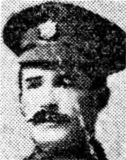
Lewis James Thomas, MM, Private, 56962, 2/2nd West Riding Field Ambulance, Royal Army Medical Corps. (Haverfordwest). Lewis’ award of the Military Medal was published in the London Gazette of 10 December 1918.
Llewellyn Thomas, MM and Bar, Signaller, 97578, 130th Field Company, Royal Engineers. (Narberth). Llewellyn’s award of the Military Medal was published in the London Gazette of 29 August 1918. He was later awarded a Bar to his Military Medal, the award of which was published in the London Gazette of 22 July 1919. Llewellyn was also awarded the French Croix-de-Guerre, and the French Medaille d’Honneur avec glaives en Bronze, which was published in the London Gazette of 18 July 1919.
T. A. Thomas, MM, Sergeant, Royal Field Artillery. (Haverfordwest). Several newspaper clippings confirm Sergeant Thomas’s award of the Military Medal, but it cannot be identified in the London Gazette.
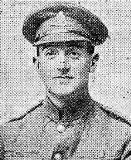
Thomas Henry Thomas, MM, Private, TF/291824, 2/10th Battalion, Middlesex Regiment. (Letterston). Thomas’ award of the Military Medal was listed in the London Gazette of 30 October 1917. He was killed in action at Jerusalem on 12 December 1917 and is buried at Jerusalem War Cemetery.
William Thomas, Private, 37456, 50th Battalion, Machine Gun Corps (Clynderwen). William’s award of the Military Medal was published in the London Gazette of 21 October 1918.
Arthur Walderne St. Clair Tisdall, VC, Sub-Lieutenant, Royal Naval Volunteer Reserve. Arthur was born in Bombay on 21 July 1890, the son of Reverend William St Clair Lomas Tisdall and Marian Louisa Tisdall (nee Gray). His father was originally from Milford Haven, but after joining the Cloth, travelled around the Empire with his young family, to spread the Mission. The family was back in England within a year of Arthur’s birth, before moving to Persia for a spell. Arthur was educated at Bedford School, before gaining a place at Trinity College, Cambridge, where he rowed and attended the Officer Training Corps, gaining a double first in classics. Arthur enlisted into the Royal Naval Volunteer Reserve as an Able Seaman on 7 October 1914 and was initially posted to HMS President, the home of the London Division of the Royal Naval Reserve. Arthur must have been an exceptional man, as within days he gained a commission to Sub Lieutenant, before being posted to Anson Battalion, of the Royal Naval Division. The division had been formed from a surplus of officers and men from within the Royal Navy, to be used as a land force. The division fought its first major action at Antwerp soon after its formation, but was evacuated before the Germans captured the port. It then regrouped and trained in England before being sent to the Mediterranean and on 25 April 1915 landed at V Beach, Gallipoli, as part of the initial landing force. Arthur disembarked from the converted ship, the SS River Clyde, with Anson Battalion, and hear some of his men calling for help, as they were under heavy fire from Turkish forces. He jumped into the water, and pushing a boat in front of him, went to their rescue. He found, however, that he could not manage alone, but managed to enlist the help of first one, and then three more naval personnel. They made five trips from the ship to the shore and were responsible for rescuing several wounded men under heavy and accurate fire, until darkness forced them to stop. Arthur survived the terrible fighting that day, but was mortally wounded by a sniper at Achi Baba on 6 May 1915. The 24-year-old died within minutes and was buried where he fell. Sadly his grave was lost during further fighting, so he is commemorated on the Helles Memorial, Gallipoli. It was to be some time before his gallantry was officially recognised, however on 31 March 1916, the following citation was published in the London Gazette, to honour the award of the Victoria Cross to Arthur:
‘During the landing from the S.S. “River Clyde” at V Beach in the Gallipoli Peninsula on the 25th April 1915, Sub-Lieutenant Tisdall, hearing wounded men on the beach calling for assistance, jumped into the water and pushing a boat in front of him, went to their rescue. He was, however, obliged to obtain help and took with him on two trips Leading Seaman Malia and on other trips Chief Petty Officer Perring and Leading Seaman Curtiss and Parkinson. In all Sub-Lieutenant Tisdall made four or five trips between the ship and the shore, and was thus responsible for rescuing several wounded men under heavy and accurate fire.
Owing to the fact that Sub-Lieutenant Tisdall and the platoon under his orders were on detached service at the time, and that this Officer was killed in action on the 6th May, it has only now been possible to obtain complete information as to the individuals who took part in this gallant act. Of these, Leading Seaman Fred Curtiss has been missing since the 4th June 1915.’
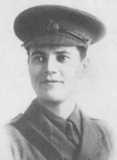
Edward Gordon St. Clair Tisdall, MC, Captain, Monmouthshire Regiment. Edward was born in Persia on 25 April 1895, the son of Reverend William St Clair Lomas Tisdall and Marian Louisa Tisdall (nee Gray). His father was originally from Milford Haven, but after joining the Cloth, travelled around the Empire with his young family, to spread the Mission. Edward, like his siblings, was educated back in England, at Bedford School. Edward was commissioned Second Lieutenant into the Monmouthshire Regiment soon after the outbreak of war and embarked for France on 25 August 1915, joining the 1/3rd Battalion, Monmouthshire Regiment. The battalion was by then at Locre, as part of 83 Brigade, 28th Division, but on the following month became the Pioneer Battalion to the 49th (West Riding) Division. Edward served on the Western Front with the battalion for the remainder of the war, and was awarded the Military Cross for his gallantry during the great offensive which ultimately won the war. The citation to his award was published in the London Gazette of 30 July 1919, and read: ‘For conspicuous gallantry and devotion to duty. He was in charge of a company which was detailed to carry forward cork piers for the construction of the bridges for the passage of the St. Quentin Canal north of Bellenglise, Sept 29th 1918. He superintended the carrying forward of all the piers and superstructures required. He was wounded in the side but carried on. His company captured a considerable number of the enemy who had been passed in the fog by the assaulting brigade.’ Edward survived the war, becoming a renowned diplomat, and spent many years in Nairobi before retiring to Torquay. He died there on 3 March 1946, aged 50. A brother, Sub-Lieutenant Arthur Walderne St. Clair Tisdall, had been the first member of the Royal Naval Division to gain the Victoria Cross during the war.
Arthur Tobin, MM, Company Sergeant Major, 200915, 1/4th Battalion, Welsh Regiment. (Haverfordwest). Arthur’s award of the Military Medal was listed in the London Gazette of 19 March 1918. He was Discharged Category E on 17 March 1919.
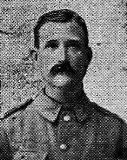
William Alfred Charles Toogood, CdeG, Company Sergeant Major, 5414, 2nd Battalion, Welsh Regiment. (Pembroke). William was awarded the Belgian Croix-de-Guerre in the London Gazette of 12 July 1918.
Ivor George Tossell, MC, Second Lieutenant, 10th Battalion, Welsh regiment. (St. David’s). Ivor’s award of the Military Cross was published in the London Gazette of 25 September 1917, and was for Pilckem Ridge. The citation read: ‘For conspicuous gallantry and devotion to duty when battalion signalling officer. He was in charge of the forward command post, and on arrival at the spot he encountered and overcame strong enemy opposition, taking many prisoners and a machine gun, and killing several of the enemy. He himself shot one at close quarters. He then at once established communications from front to rear, and successfully maintained them throughout the day. He displayed marked energy and resource.’
George Walter Tracey, MM, Private, 39575, Welsh Regiment. (Pembroke). George’s award of the Military Medal was published in the London Gazette of 9 December 1916, and was probably for the Somme. He lived at Pembroke, and worked at Pembroke Dockyard prior to the war.
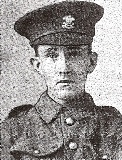
William Henry Tribe, MSM, Sergeant, T4/069791, 38th Divisional Train, Royal Army Service Corps. (Milford Haven). William’s award of the Meritorious Service Medal was the Peace Gazette of 30 May 1919.
Joseph Underwood, MM, Private, 200588, 1/4th Battalion, Welsh Regiment. (Fishguard). Joseph’s award of the Military Medal was listed in the London Gazette of 19 March 1918.
Reginald W Walker, MSM, Sergeant, S/7388, Army Ordnance Corps. (Pembroke Dock). Reginald’s award of the Meritorious Service Medal was published in the London Gazette of 28 December 1917.
Charles Edward Wash, MSM, Flight Sergeant, 203447, Royal Air Force. (Fishguard). Charles’s award of the Meritorious Service Medal was published in the London Gazette of 30 May 1919, in the Birthday Honours list. He served at R.A.F. Fishguard.
John Watkins, MM, Gunner, 4194, Royal Field Artillery. (Pembroke). John’s award of the Military Medal was published in the London Gazette of 25 June 1918.
Gilbert France Watson, DSO, Lieutenant, 1/1st Welsh Field Company, Royal Engineers. (St. David’s). Gilbert was transferred from the Welsh Royal Engineers to another unit in France, and gained his award of the DSO at Hooge. The citation in the London Gazette of 7 December 1915 read: ‘For conspicuous gallantry and determination near Hooge. On the night of 24th-25th September, 1915, he made an excellent reconnaissance of the enemy’s wire, and on the 25th crawled out with two men, and successfully cut it before the assault. During the assault, with a party of 12 sappers and 25 infantry, he dug 80 yards of a communication trench in two hours under very heavy fire, by which nearly threequarters of his men became casualties. He then reported for instructions, and took the remains of his party into the captured positions in order to consolidate them. When retirement was ordered he got back to our original trenches with one sergeant, who was killed almost at once, and three or four men, and, finding the trenches unoccupied, he collected about 25 men of the 4th Battalion Gordon Highlanders, and held on until relieved by another battalion after dark. Second Lieutenant Watson set a fine example of bravery and devotion to duty.’
John B. Watts, MM, Private, 267434, 7th Battalion, Warwickshire Regiment. (Haverfordwest). John’s award of the Military Medal was published in the London Gazette of 2 August 1918. He had originally served with the 4th Welsh, and was captured by the Germans in 1918.
William Thomas Way, MM, Bombardier, 371186, Royal Garrison Artillery. (Tenby). William’s award of the Military Medal was published in the London Gazette of 25 September 1917.
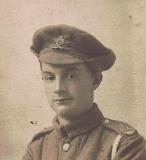
Joseph Gilbert Webb, MC, Lieutenant, 14th Battalion, Royal Welsh Fusiliers. (Haverfordwest). Joseph’s award was published in the London Gazette of 2 July 1918, and read; ‘For conspicuous gallantry and devotion to duty when in command of a fighting patrol of 8 men. Being attacked by an enemy patrol of 28 men, he at once opened fire and charged the enemy. He drove them back in confusion, inflicted heavy casualties on them, and captured two prisoners. All his patrol, including 3 wounded men, were brought back safely.’ Joseph was wounded as a result, and died in hospital on 9 May 1918. He is buried at Haverfordwest (St. Thomas A Beckett) Churchyard.
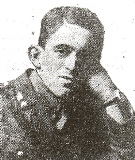
Hildred Edward Webb-Bowen, CMG, DSO, MID, Captain (T/Colonel), Royal Engineers. (Haverfordwest). Hildred was awarded the CMG and Distinguished Service Order during the war. He was also mentioned in despatches in the London Gazette of 7 June 1918: ‘My Lord, I have the honour to submit herewith a list of the names of the Officers, Warrant Officers, Non-Commissioned Officers, Men and Nursing Staff, whose services I desire to bring to your Lordship’s notice for gallant conduct and distinguished services rendered during the period from the 21st September, 1917, to February 28th, 1918. I have the honour to be, My Lord, Your Lordship’s most obedient Servant, G, F. MILNE, Lt.-Gen.’
Tom Ince Webb-Bowen, KCB, CMG, MID, Brigadier-General, Royal Flying Corps. (Haverfordwest). Tom quickly rose through the ranks of the Royal Flying Corps during the Great War. Among his many awards was the award of the Order of the Garter, which was announced in the London Gazette of 28 December 1917. The citation read; ‘The KING has been graciously pleased to give directions for the following promotions in, and appointments to, the Most Distinguished Order of Saint Michael and Saint George, for services rendered in connection with Military Operations in the Field. Dated 1st Jan. 1918.’ Tom was also mentioned in despatches on several occasions during the Great War. He was made Knight’s Commander of the Bath in the London Gazette of 30 May 1919, the Russian Order of St. Anne, 3rd Class, with Swords, in the London Gazette of 25 August 1915, the French Croix d’Officier of the Legion of Honour in the London Gazette of 26 September 1918, the French Croix-de-Guerre in the London Gazette of 12 April 1918, the French Medaille Militaire in the London Gazette of 16 August 1918, the Italian Military Order of Savoy, Officer, in the London Gazette of 30 May 1919, the Belgian Order de Leopold, Officier, in the London Gazette of 12 April 1918.
William Ince Webb-Bowen, DSO, Major (Lt-Col), Middlesex Regiment. (Haverfordwest). William’s award of the Distinguished Service Order was published in the King’s Birthday Honours list in the London Gazette of 1 June 1917. He later rose to the rank of Brigadier-General, Commanding 8th Infantry Brigade.
William C. Wheeler, MM, CdeG, Sergeant, 87545, Royal Engineers. (Manorbier). William’s award of the Military Medal was published in the London gazette of 11 January 1918. He was also awarded the French Croix-de-Guerre, which was published in the London Gazette of 12 April 1918.
George Wildig, DCM, Sergeant, 9269, 1st Battalion, King’s Shropshire Light Infantry. (Pembroke Dock). George’s award of the Distinguished Conduct Medal was published in the London Gazette of 10 March 1916, and read: ‘For consistent good work reconnoitring. He has many times obtained valuable information.’ He was later commissioned Lieutenant into the KSLI, and died of sickness brought on by his service on 6 November 1918. George is buried at Pembroke Dock (Llanion) Cemetery.
Charles Isaac Wildridge, MM, Private, 44958, Machine Gun Corps. (Milford). Charles’s award of the Military Medal was published in the London Gazette of 12 July 1918. He died in 1958.
Thomas Wilkins, MM, Bombardier, 371167, 114 Siege Battery, Royal Garrison Artillery. (Amroth). Thomas’ award of the Military Medal was listed in the London Gazette of 25 September 1917, and was probably for Third Ypres.
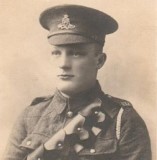
Charles William Willcox, CdeG, Sergeant, 371064, Royal Garrison Artillery. (Pembroke Dock). Charles’s award of the French Croix-de-Guerre was published in the London Gazette of 12 April 1918.
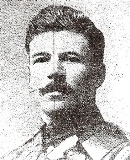
Arthur John Allen-Williams, CMG, Major, Royal Engineers. (Fishguard). Arthur was born in 1870, the son of William and Anne Williams, of Gwaun House, Main Street, Fishguard, and was educated at Haverfordwest Grammar School. He trained as an engineer prior to the war and married Ursula Mary Allen in January 1913, changing his name to Allen-Williams. He began the war with the rank of Lieutenant, and during August 1915 was gazetted at Temporary Inspector of Works, Royal Engineers Staff. Arthur was soon promoted again, in June 1917 being made Deputy Director of Inland Waterways and Docks, and then to Temporary Major, with the Acting rank of Brigadier General, in command of Inland Waterways and Docks, being responsible for the cross Channel barge service and for the Train Ferry, which were vitally important to keep up the flow of men and material to France. Arthur was mentioned in despatches during the war, and was also made Companion of the Order of St. Michael and St. George (C.M.G.) and awarded the French Officier Legion D’Honneur on 9 November 1920. He relinquished his commission upon completion of his service on 1 January 1920, and was granted the rank of Brigadier General. He was later knighted, and died on 27 November 1949, aged 79.
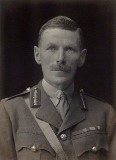
Benjamin Williams, MM, Gunner, 156071, Royal Garrison Artillery. (Narberth). Benjamin’s award of the Military Medal was published in the London Gazette of 21 October 1918.
George Davies Williams, DSO, Lieutenant-Commander, Royal Australian Navy. (St. Dogmaels). George was born at St. Dogmaels on 17 September 1879. He served with the Royal Navy, before transferring to the Royal Australian Navy prior to the outbreak of the Great War. His award of the Distinguished Service Order was published in the London Gazette of 5 March 1920, which read; ‘Honours for Services in the Mine Clearance Force. The King has been graciously pleased to approve of the award of the following honours, decoration and medals to the undermentioned Officers and Men…’
Harold Glyn Williams, MC, Lieutenant, Welsh Regiment. (Tenby). Harold was mentioned in a newspaper report as having been awarded the Military Cross, and being given the Freedom of Tenby, but the award cannot presently be traced.
Richard Williams, MC, Lieutenant, 119th Heavy Battery, Royal Garrison Artillery. (Solva). Richard was educated at Aberystwyth University and was awarded the Military Cross during the war. The award was published in the London Gazette of 1 January 1918, in the New YEars Honours list, so there was no citation.
Thomas Williams, Station Master, GWR Pembroke. The very rare award of the Albert Medal was granted to Thomas Williams, the Station Master at Pembroke. The citation from Whitehall, dated 12 July 1919, read; ‘The KING has been pleased to award the Albert Medal to Mr. Thomas Williams, Station Master on the Great Western Railway at Pembroke, in recognition of his gallantry in saving life in March last. The circumstances are as follows: ‘On the 13th March, as a train was entering Pembroke Station, an elderly gentleman, Canon Bowen, of Pembroke, in stepping aside to avoid a luggage barrow, fell off the platform on to the rails. The train was not more than thirty yards away from him when he fell, and was travelling fast. The Stationmaster, who was close by, at once jumped down in front of the engine and just succeeded in rolling Canon Bowen off the track, and held him down alongside the rails until it was safe to allow him to get up. Although the brakes were applied it was found impossible to bring the train to a .standstill, until the engine and two coaches had passed the spot where rescued and rescuer were lying. Had it not been for Mr. Williams presence of mind and courage Canon Bowen could hardly have escaped instant death.’ The award was published in the London Gazette of 18 July 1919.
Herbert Ernest Wingate, DCM, Battery Sergeant Major, 2973, Ammunition Column, Royal Horse Artillery. (Tenby). Herbert’s award of the Distinguished Conduct Medal was published in the London Gazette of 31 May 1918.
James Wood, DCM, Sergeant, 6331, 1st Battalion, Wiltshire Regiment. (Pembroke Dock). James’s award of the Distinguished Conduct Medal was published in the London Gazette of 2 June 1916: ‘On the 16th June, 1916 his company attacked and captured a German trench at Hooge. During a counter-attack that took place on that trench, the bomb supply had run out. Company Sergeant Major Wood volunteered tom renew the supply across 39 yards of open country swept by enemy machine-gun fire; though several men were previously killed in the attempt, he still continued and succeeded in returning with the bombs. On the 2nd September, 1915, in the crater trench at Hooge his company were heavily bombarded by the enemy and the trenches obliterated with very heavy casualties to the company; though he had been burned, and was at the time wounded, he showed great initiative and coolness in reorganising his company. He had constantly shown the greatest gallantry in action.’ James was later commissioned, and was sadly killed later in the war. (See the Pembroke Dock War Memorial).
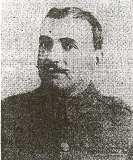
William J Wright, DCM, Sergeant, 56610, Royal Field Artillery. (Pembroke). William’s award of the Distinguished Conduct Medal was published in the London Gazette of 28 December 1917.
Colin Bassett Wrong, MC, Lieutenant, 6th Battalion, Royal Munster Fusiliers. (Albert Town, Haverfordwest). Colin was born on 28 February 1895, the son of Richard Bassett and Lillian Sophia Wrong, of 128, 6th Street, Albert Town, Pembrokeshire. He married Marjorie Snell before enlisting in September 1914 into the Inns of Court Officer Training Corps, giving his address as 191, Camden Road, N.W. Colin was commissioned into the Bedfordshire Regiment on18 December 1914, before being posted to the Royal Munster Fusiliers in May 1916, and was posted to their 6th Battalion, which was attached to 30 Brigade, 10th (Irish) Division. The Division was in Egypt, readying for the invasion of Palestine. Colin won his Military Cross in Palestine. His award was listed in the London Gazette of 16 August 1917, and read; ‘For conspicuous gallantry and devotion to duty. He assisted in. dragging a severely wounded man back a distance of 1,500 yards, under heavy fire. He displayed great courage and coolness throughout.’ Sadly, Colin was killed just months later, on 28 December 1917. He was 21 years old, and is buried at Jerusalem War Cemetery, Israel. (See the Haverfordwest War Memorial).
Francis George Wynne, DSO, Major, 2nd Battalion, Loyal North Lancashire Regiment, (Hundleton). Francis’s award of the Distinguished Service Order was published in the London Gazette of 26 September 1916, and read; ‘For conspicuous gallantry and devotion to duty in action. When the enemy, in overwhelming numbers, attacked our trenches, he remained at his post, though wounded and unable to stand, until the enemy were beaten off. He not only commanded his own company, but took charge of another, the officers of which had become casualties.’ Francis was killed during the German Offensive in Flanders on 10 April 1918. (See the Pembroke Monkton War Memorial).
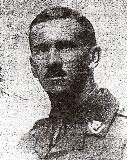
James Hamilton Langdon Yorke, MC, Captain, 24th Battalion, Welsh Regiment. (Fishguard). James’s award was published in the London Gazette of 2 July 1918, and read; ‘For conspicuous gallantry and devotion to duty. When part of the line was driven back by the enemy he rapidly reorganised the situation with great skill under very heavy shell and .machine-gun fire. He showed splendid leadership and initiative.’ He was killed during the action on 27 December 1917 and is buried at Jerusalem War Cemetery. (See the Fishguard War Memorial).
